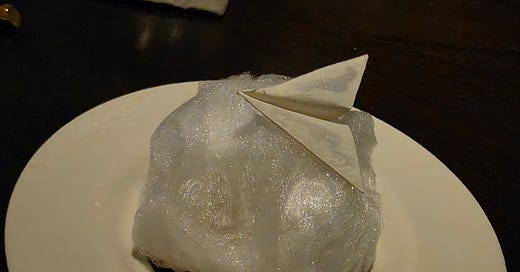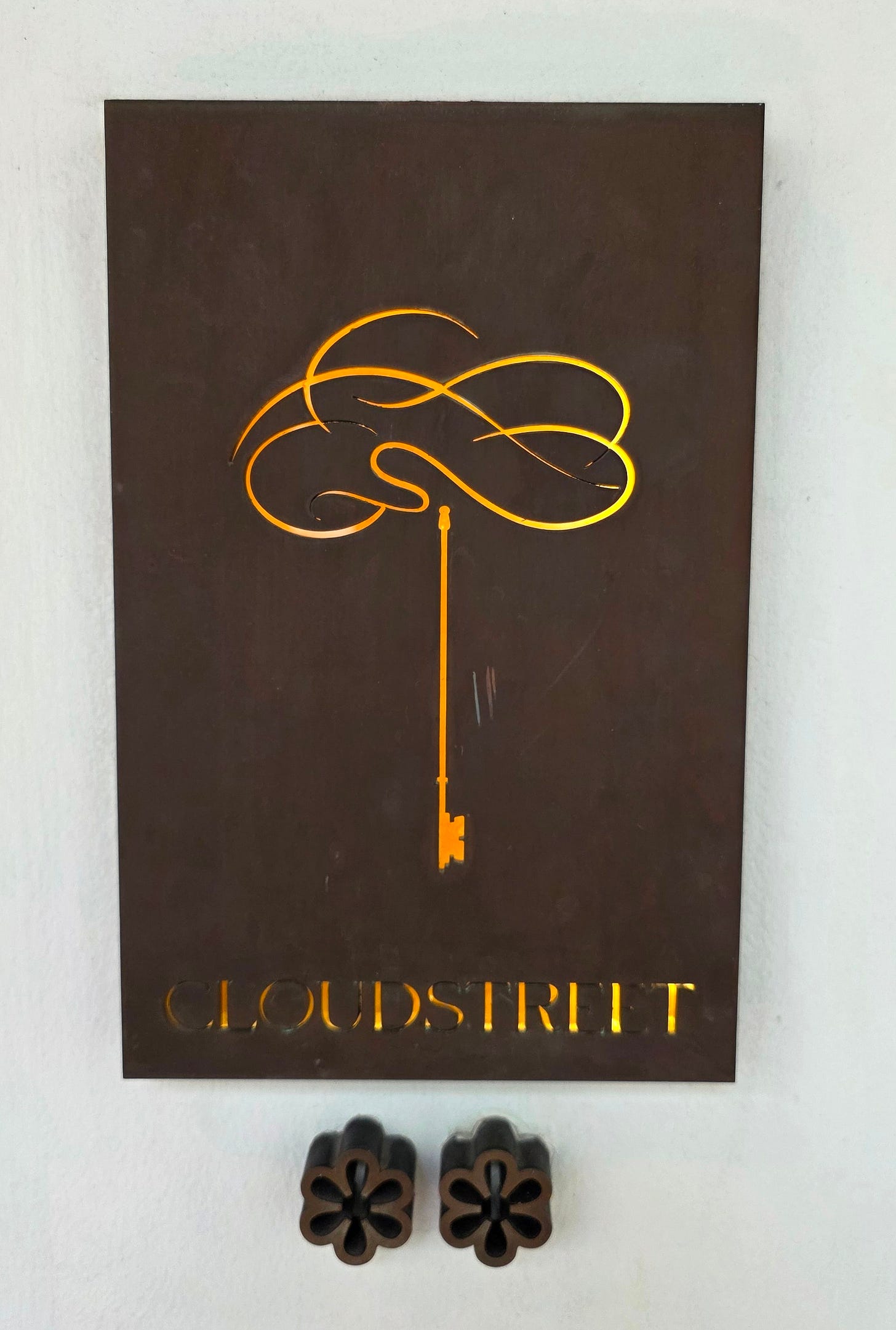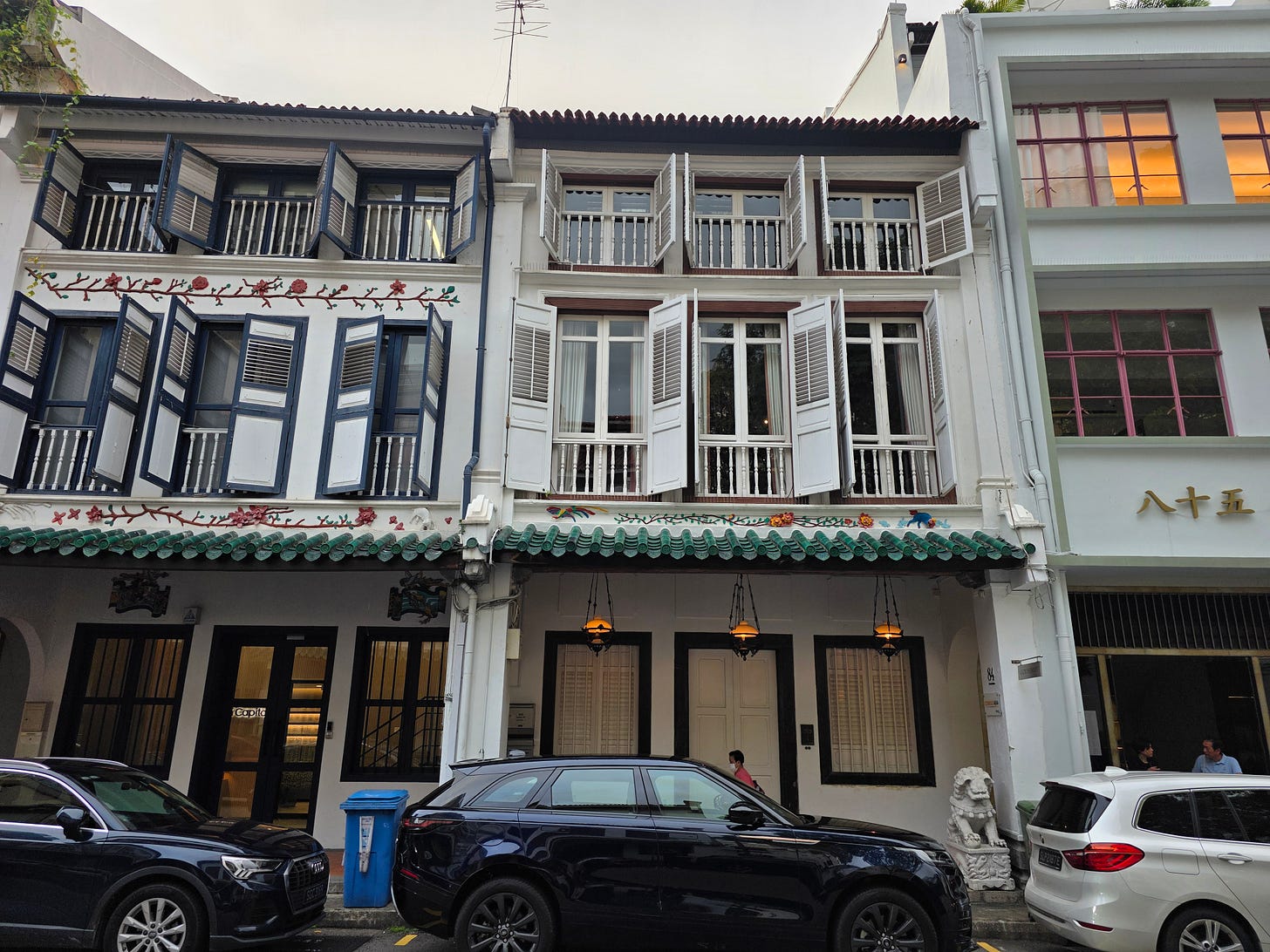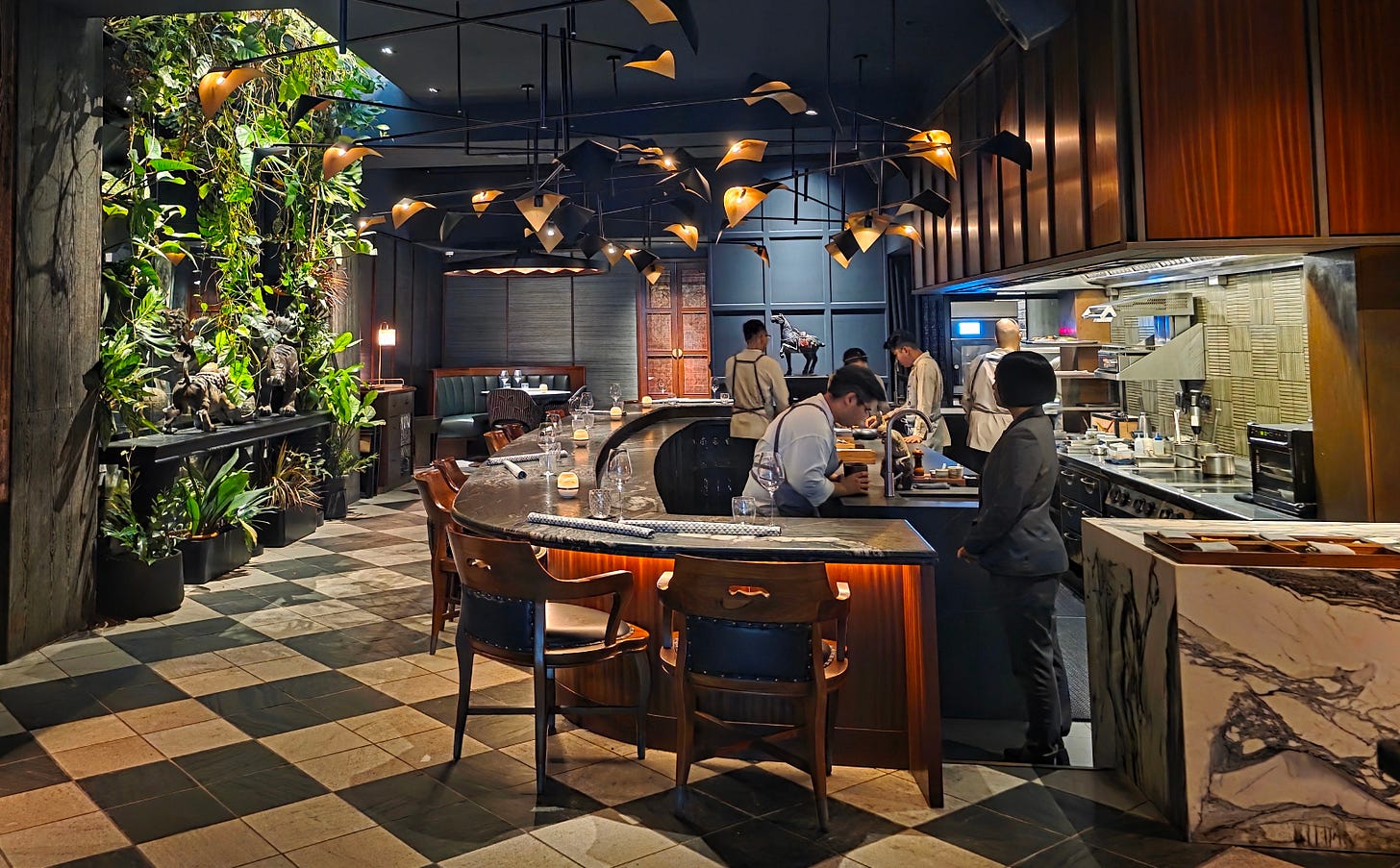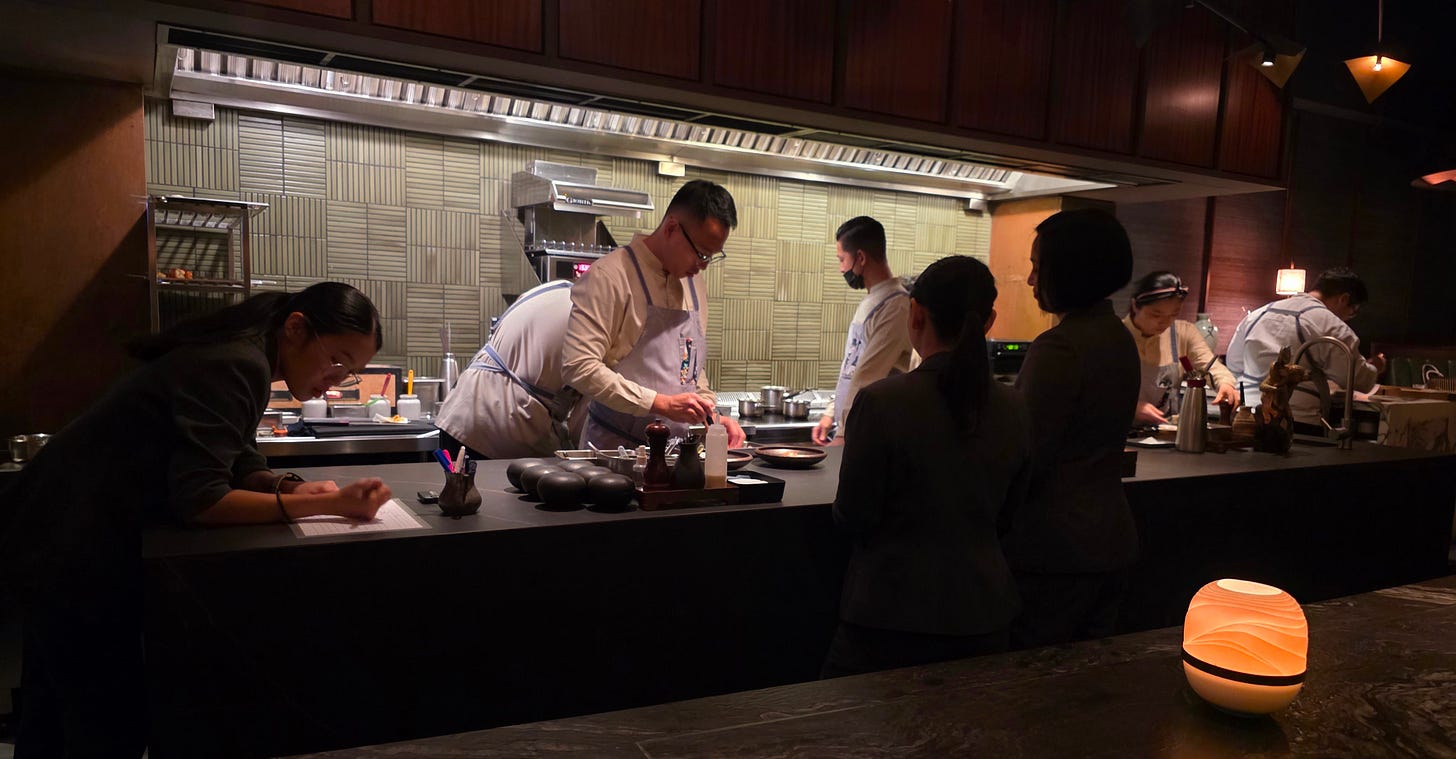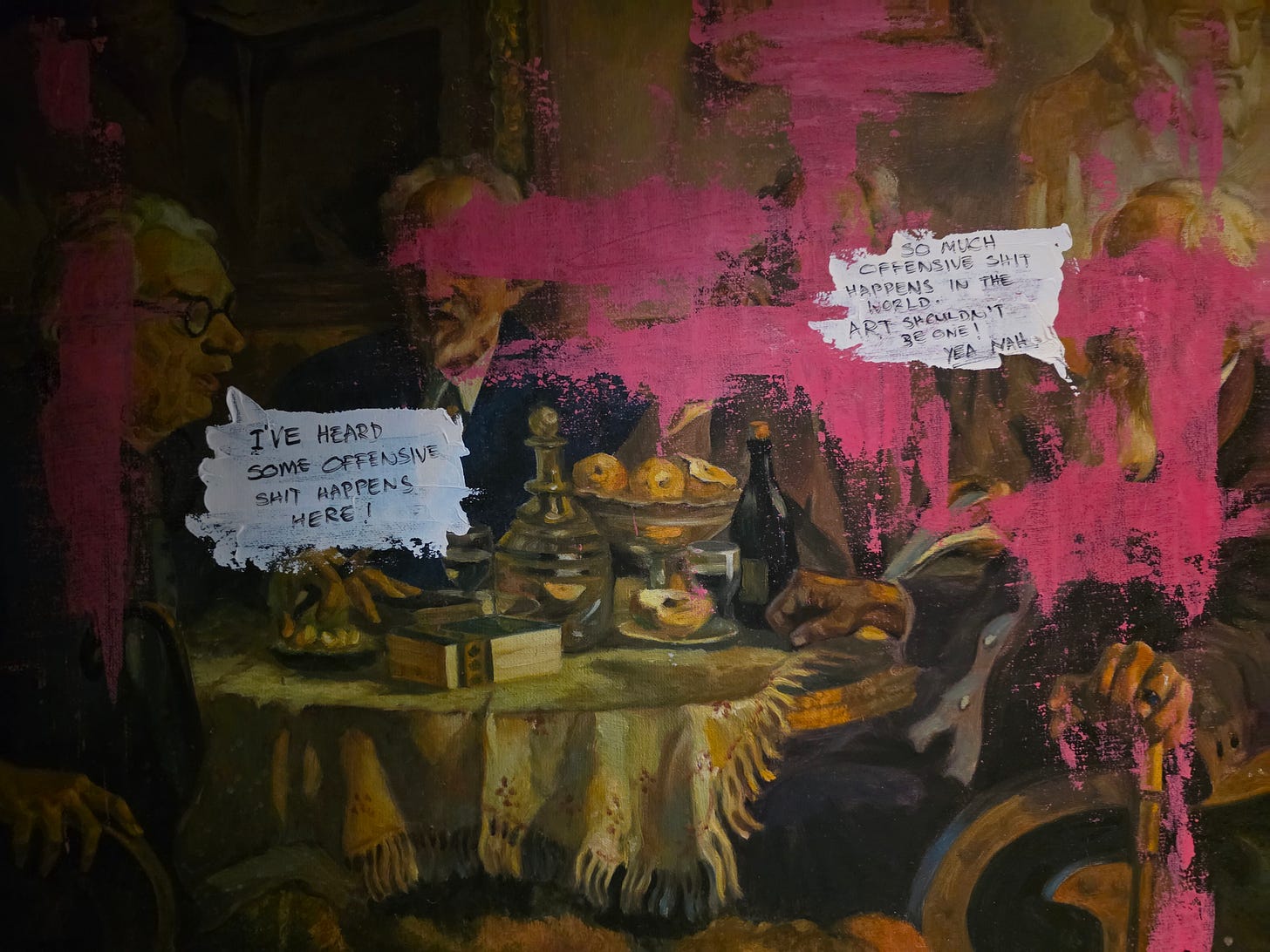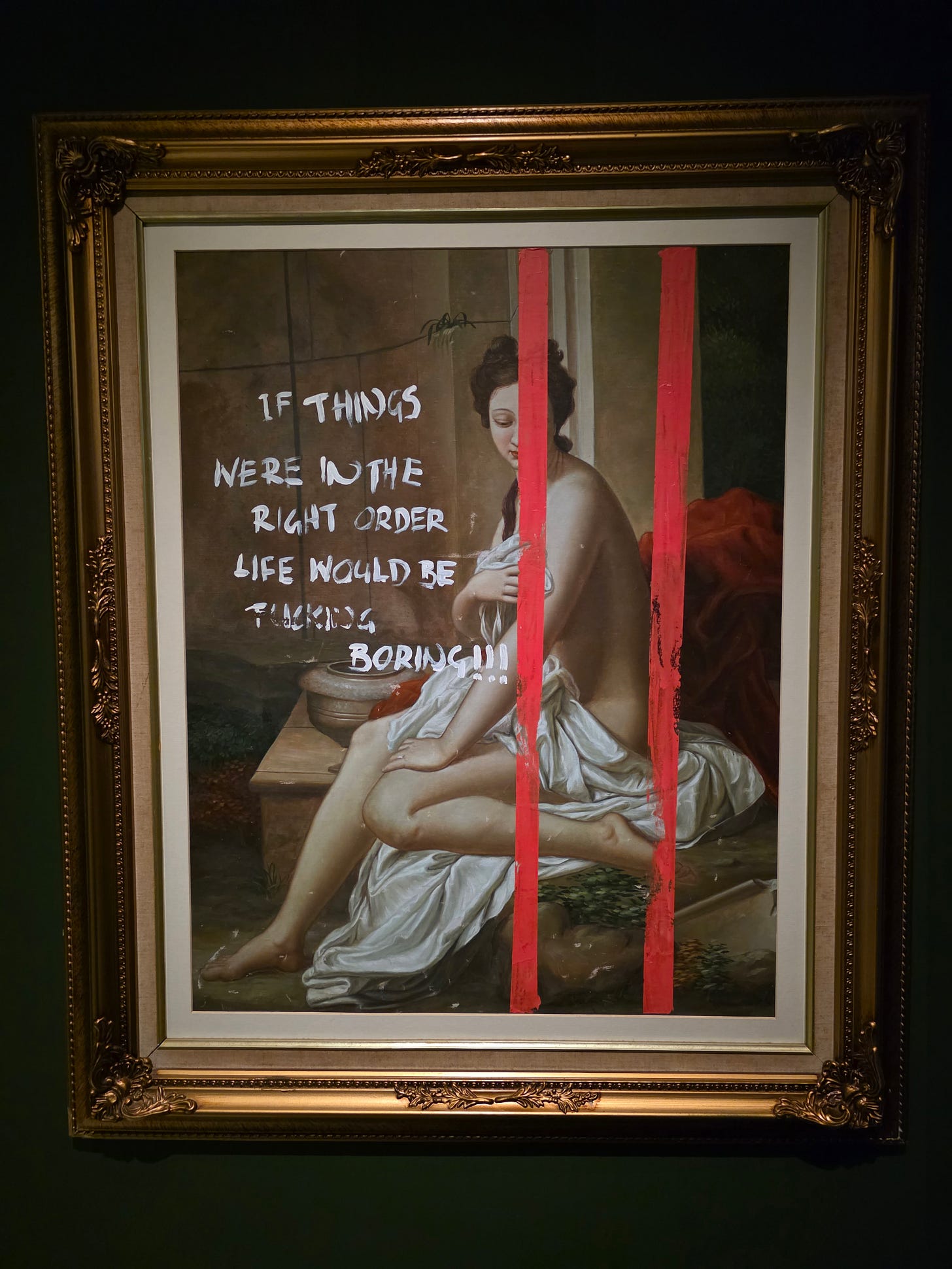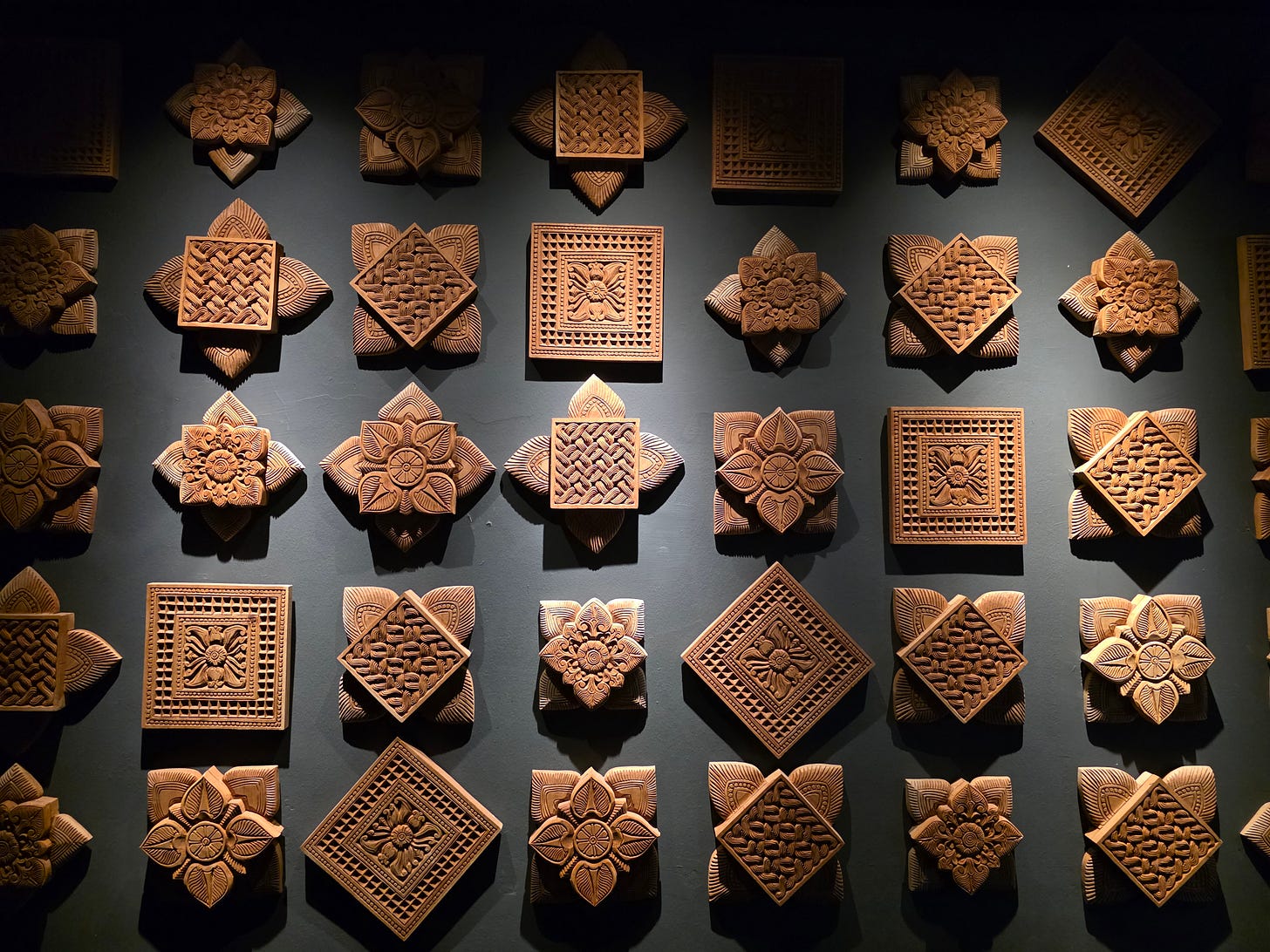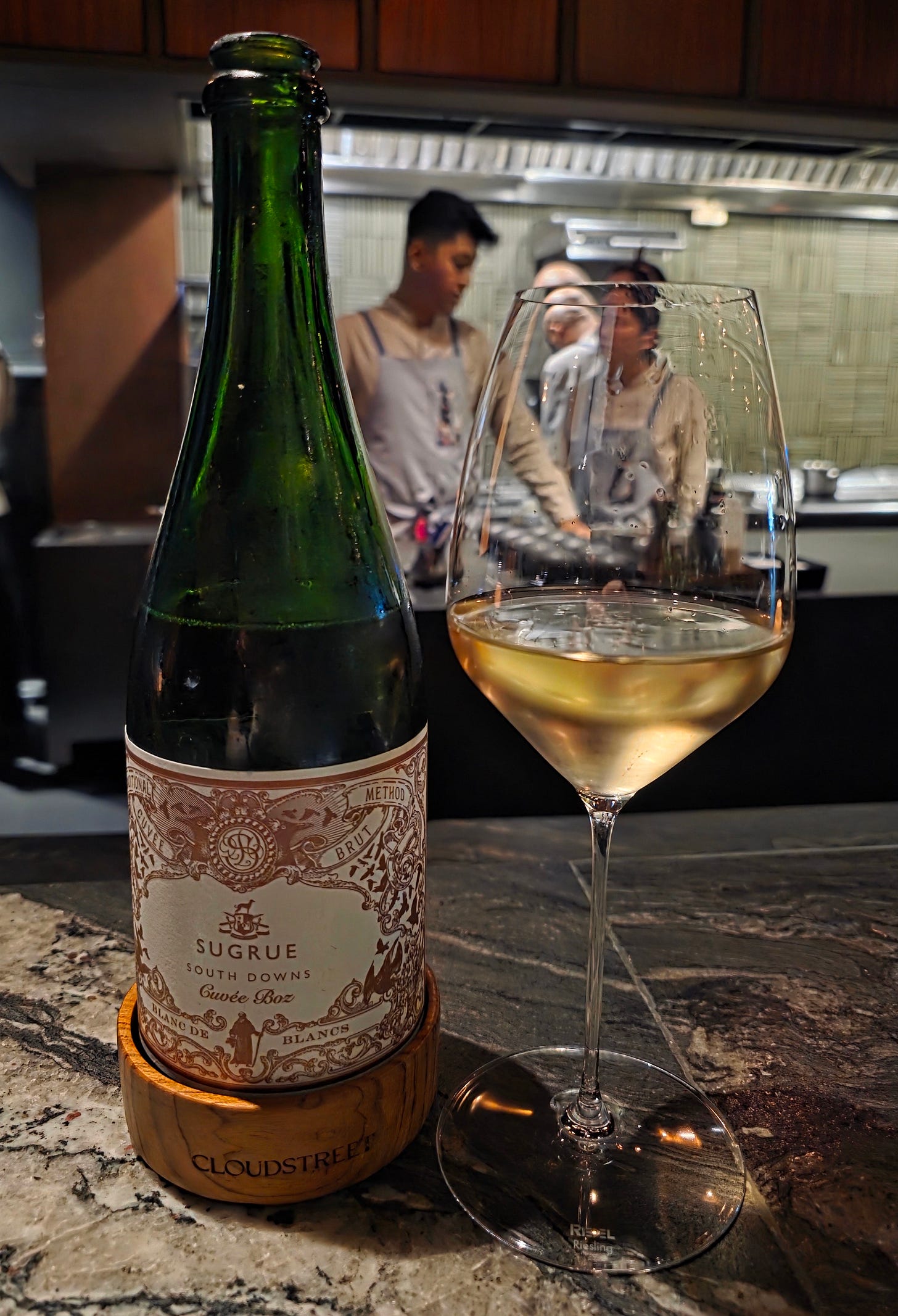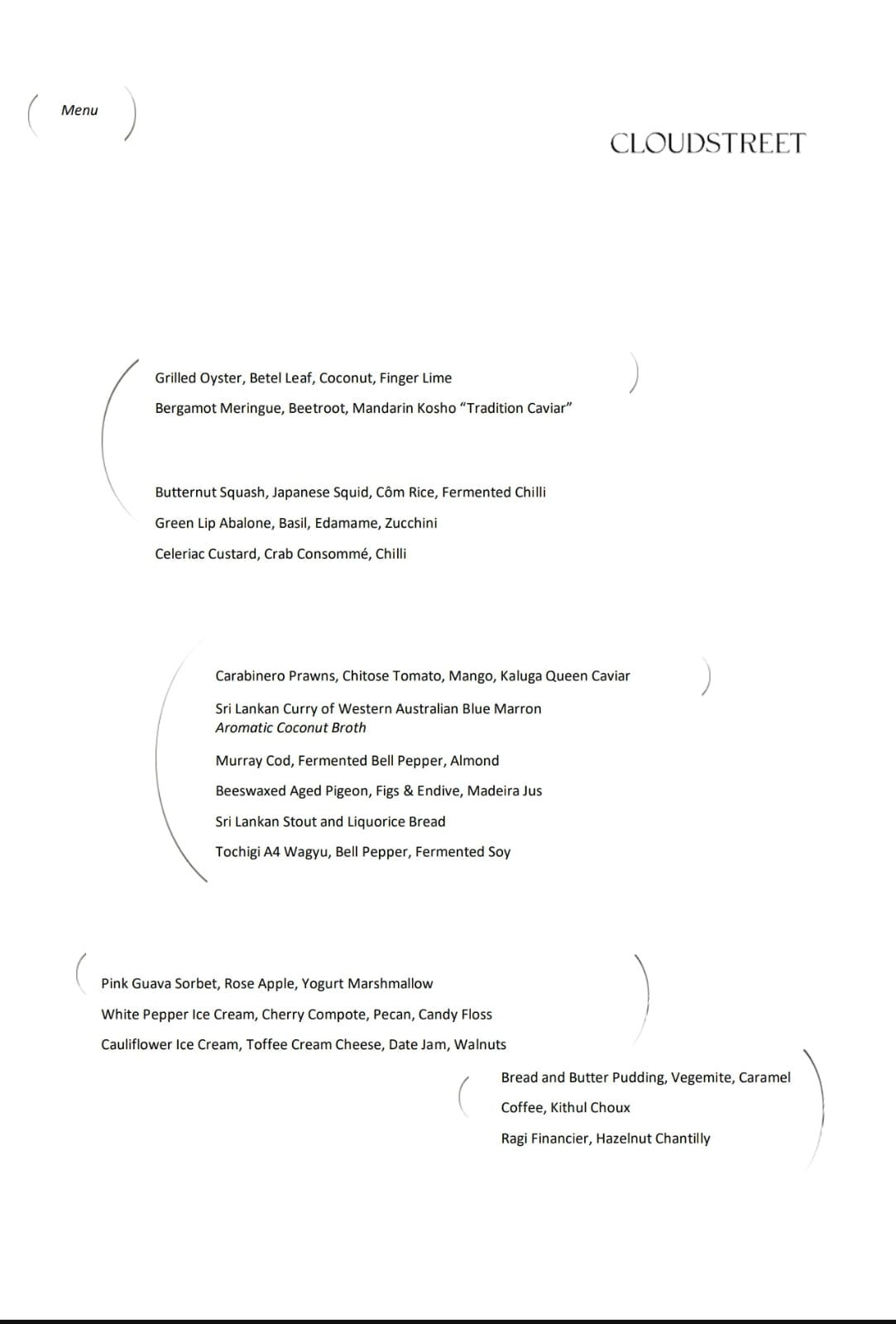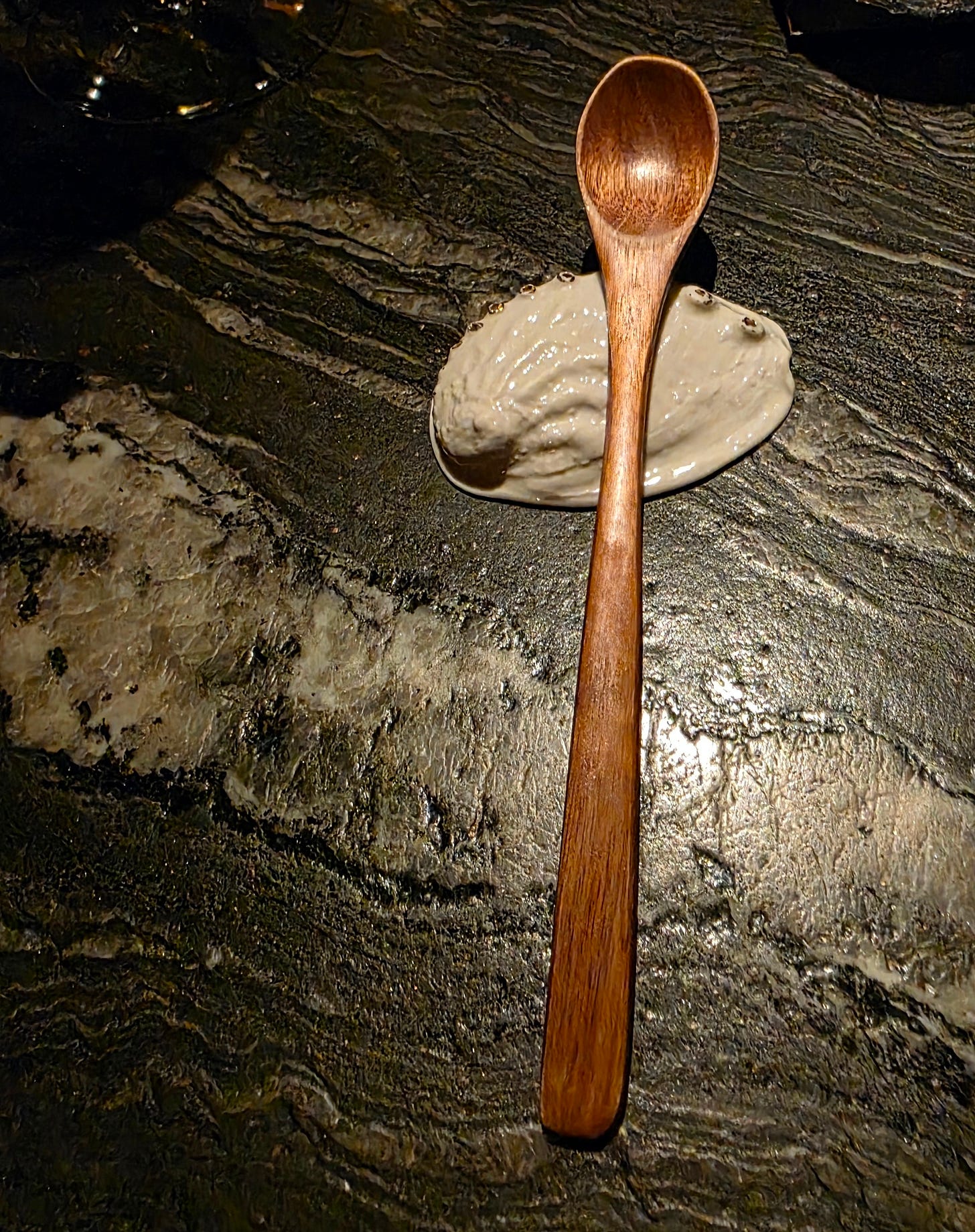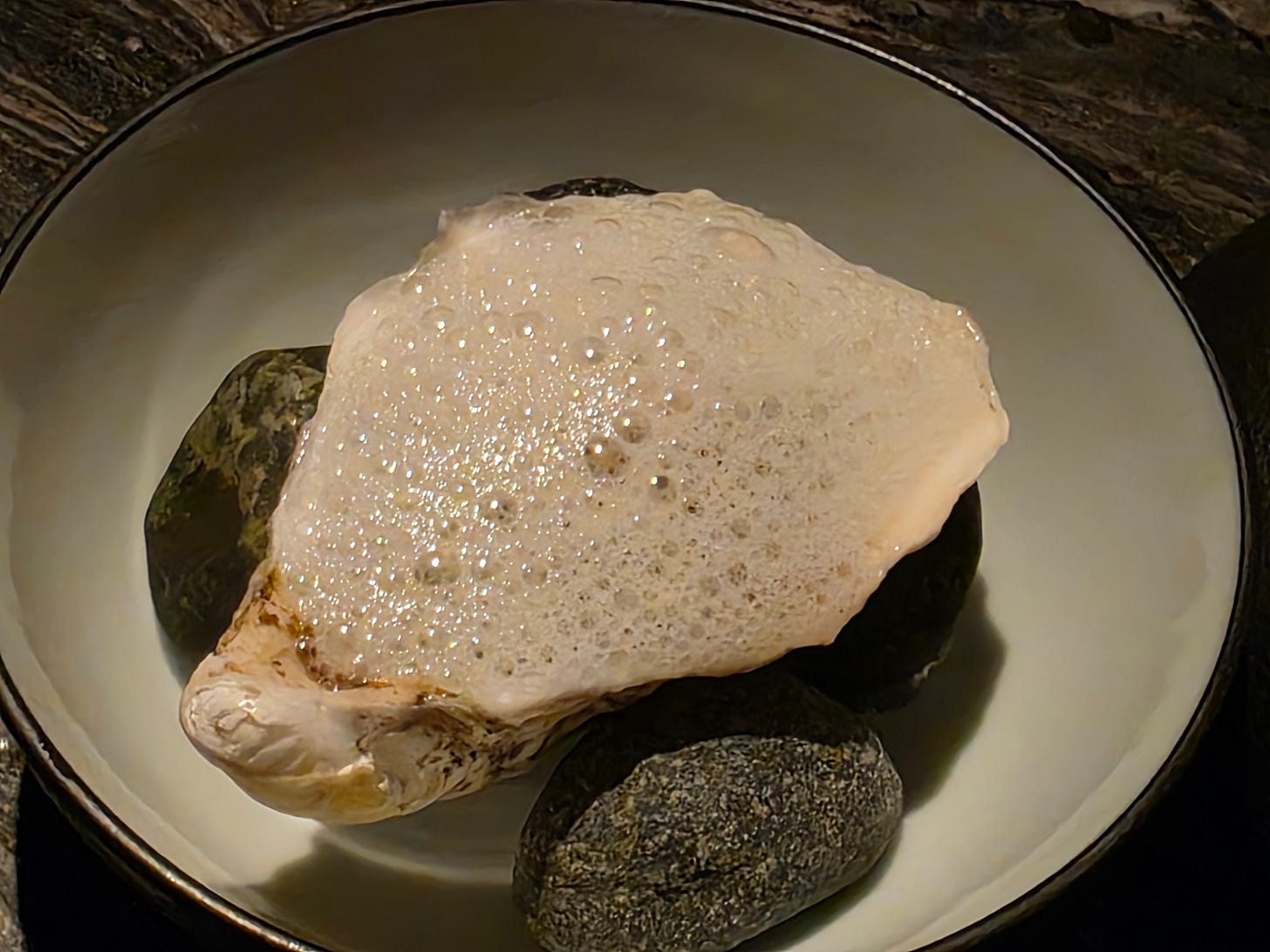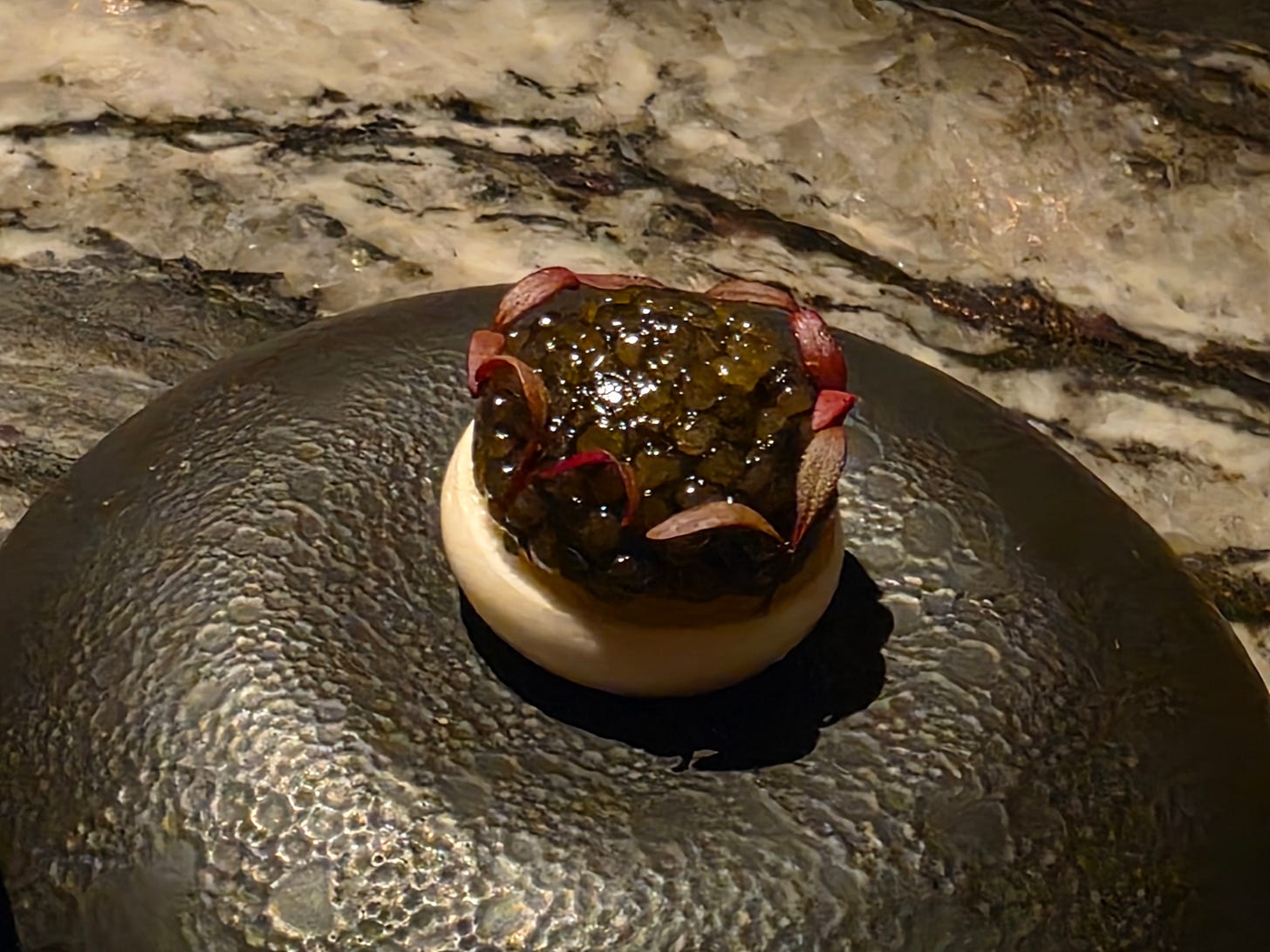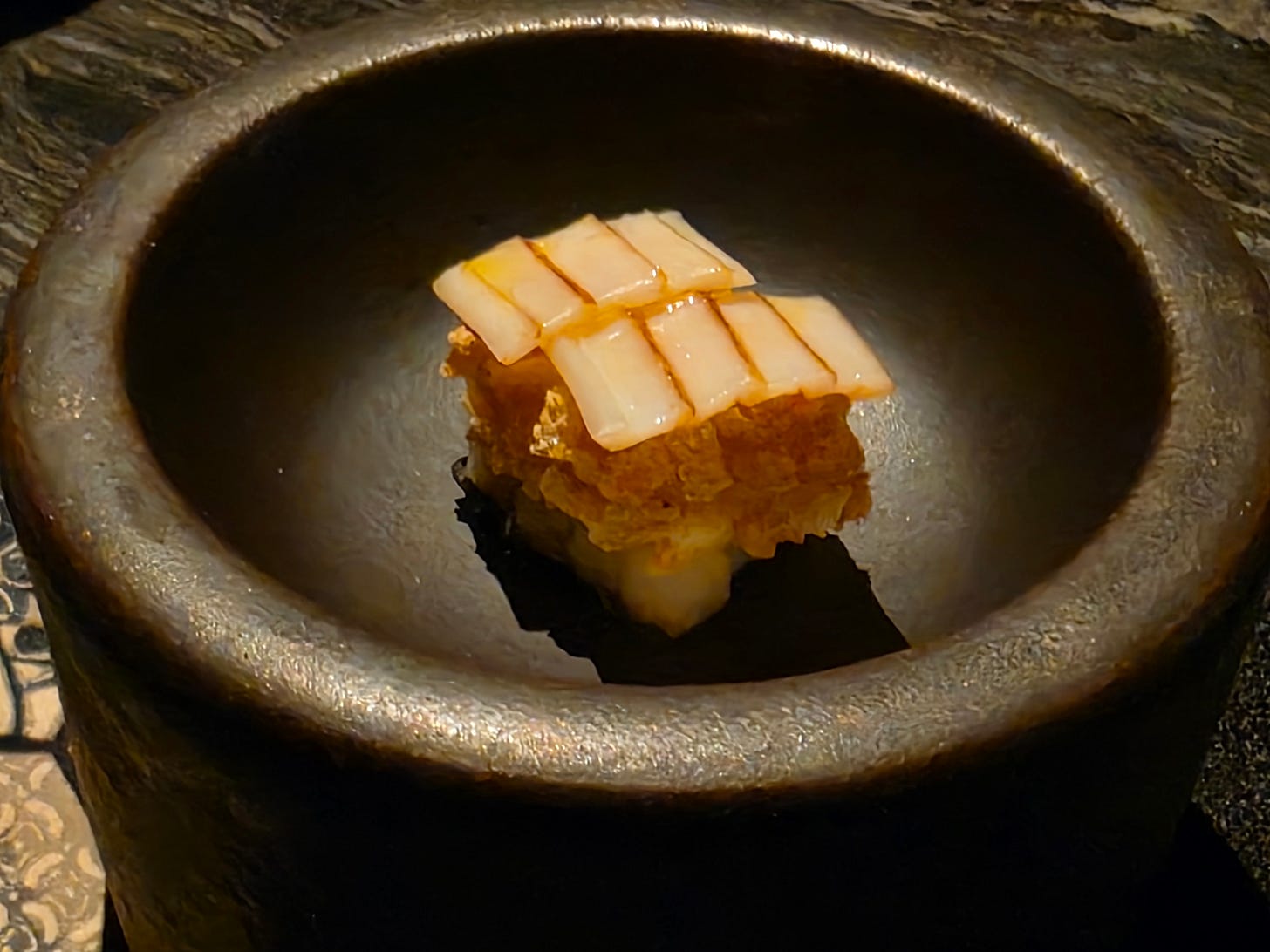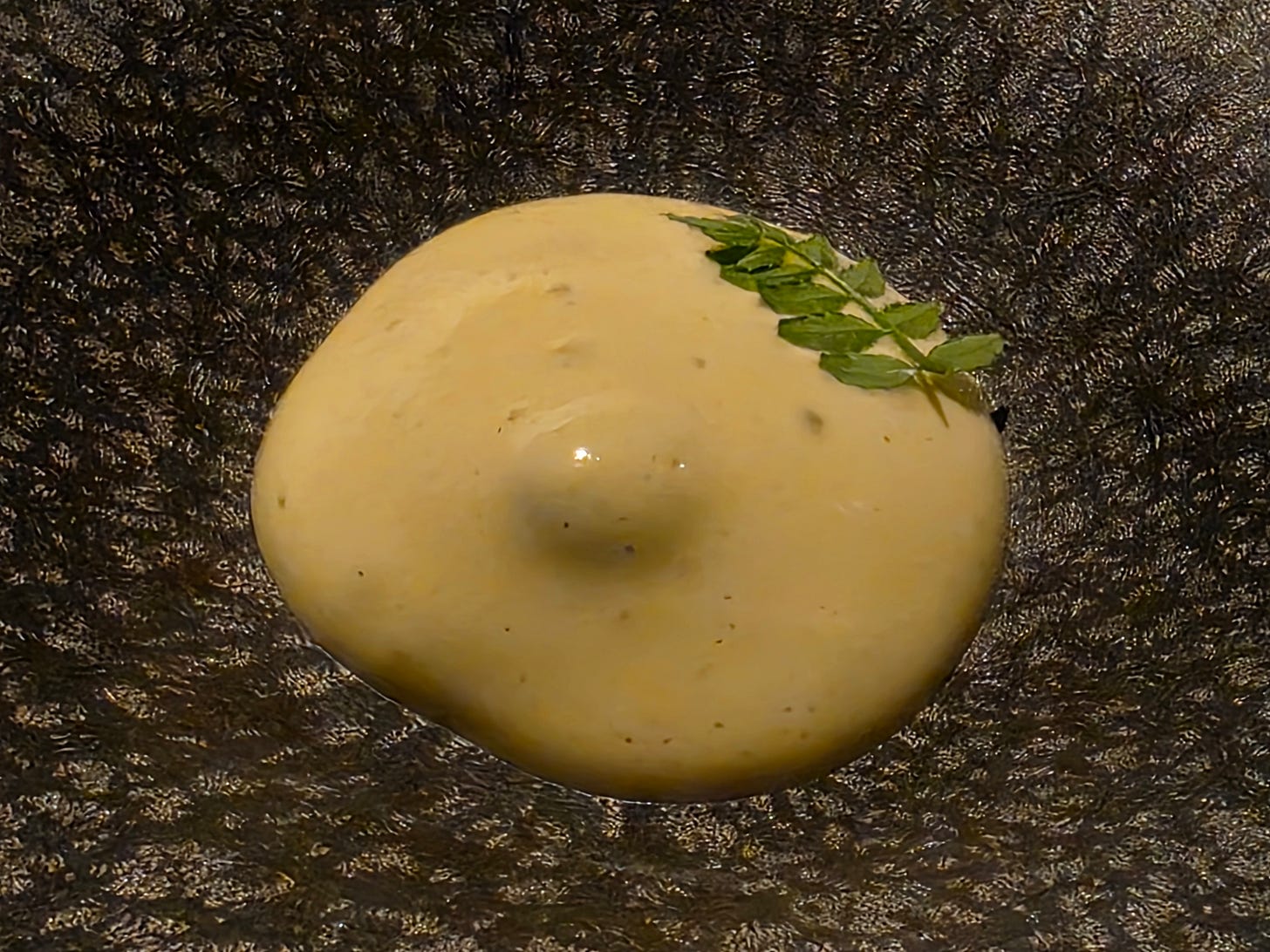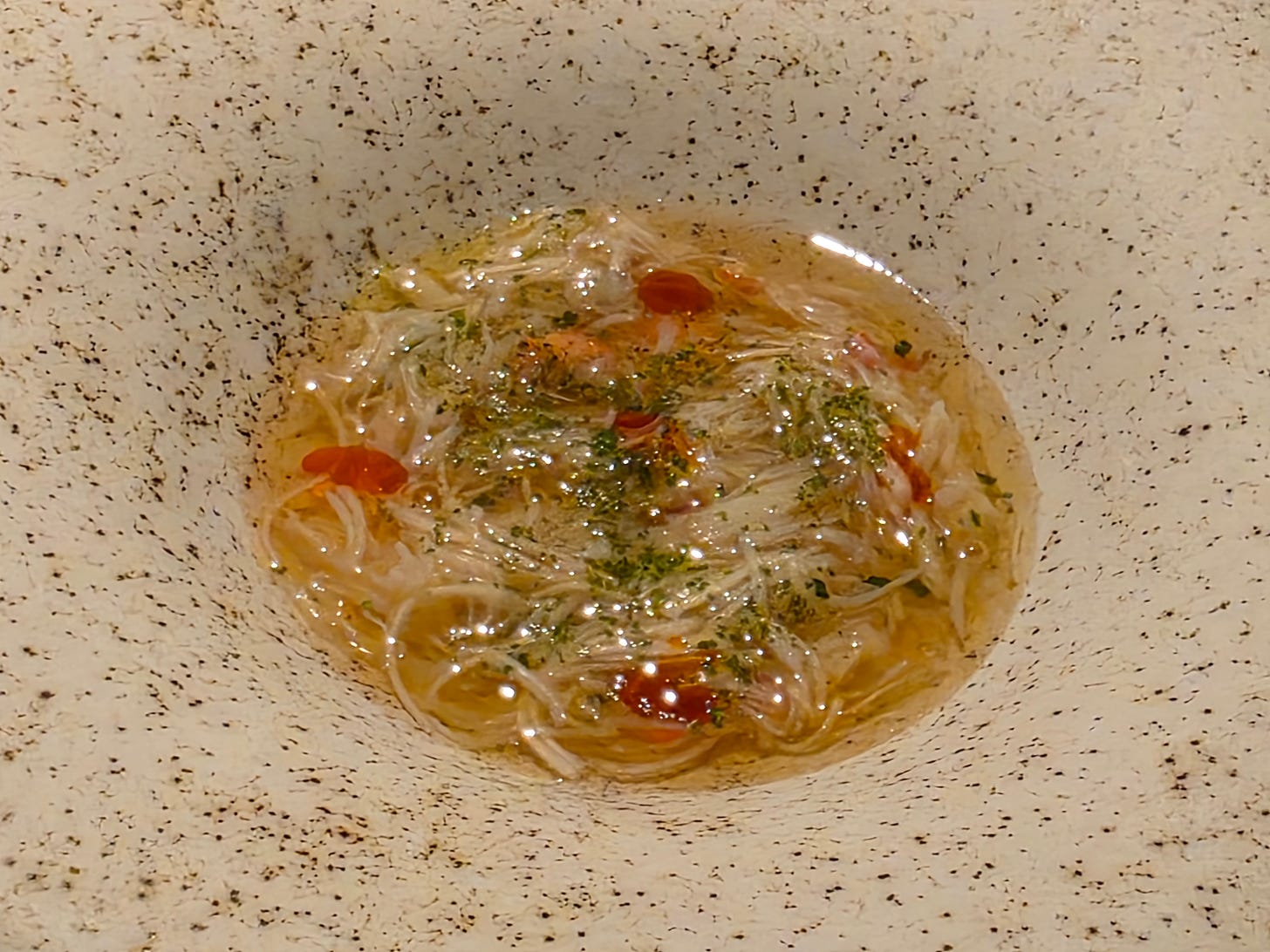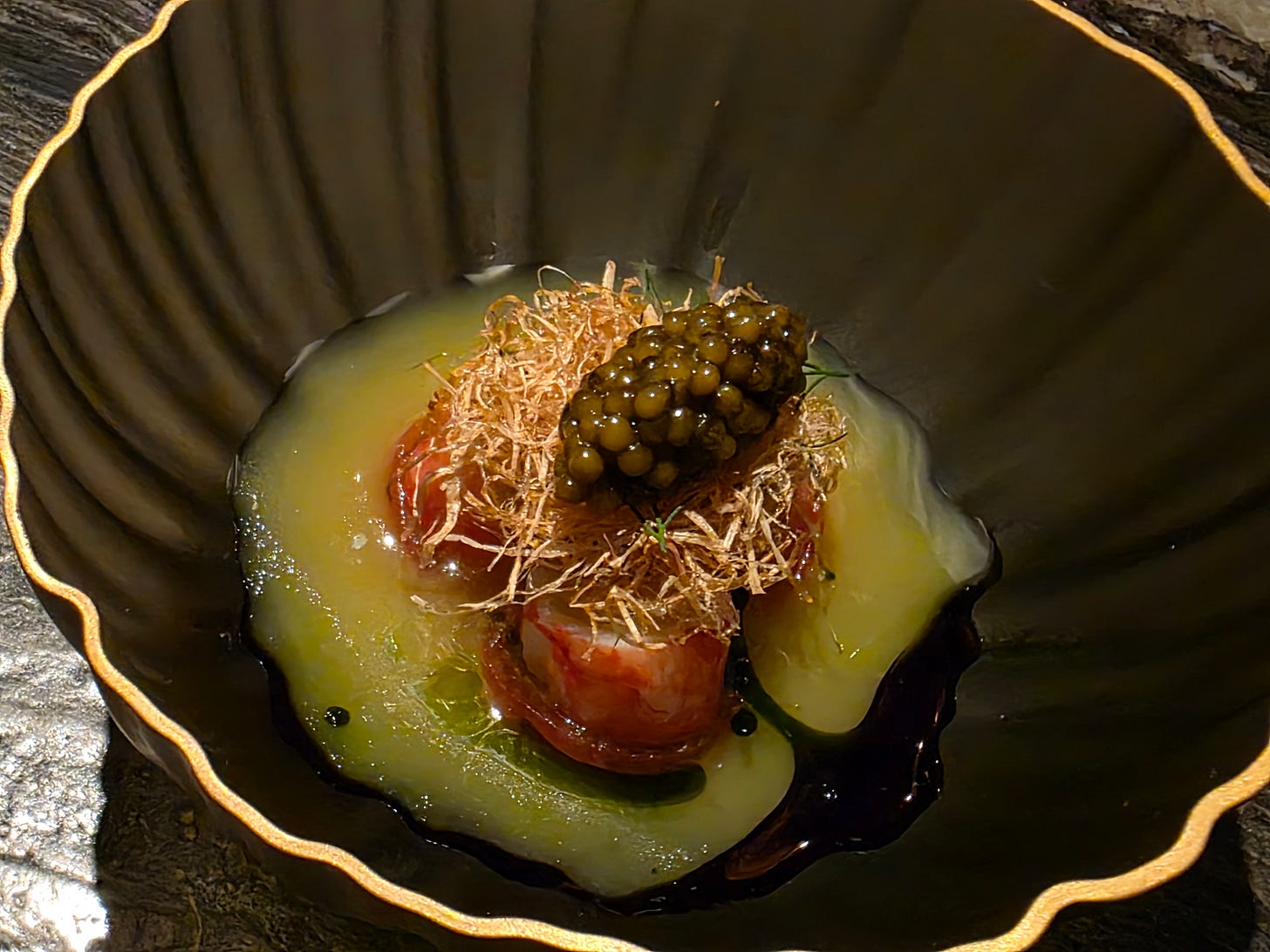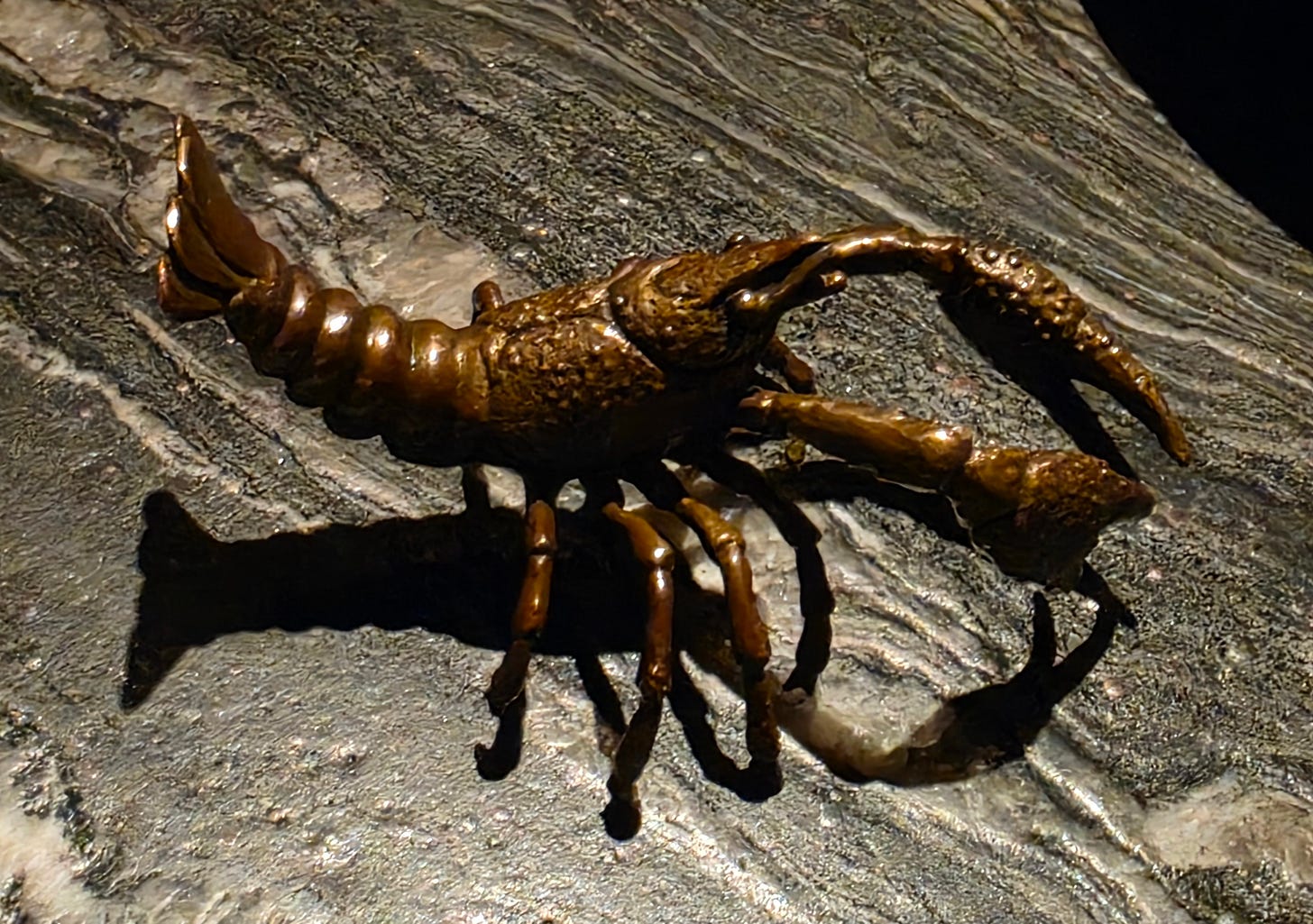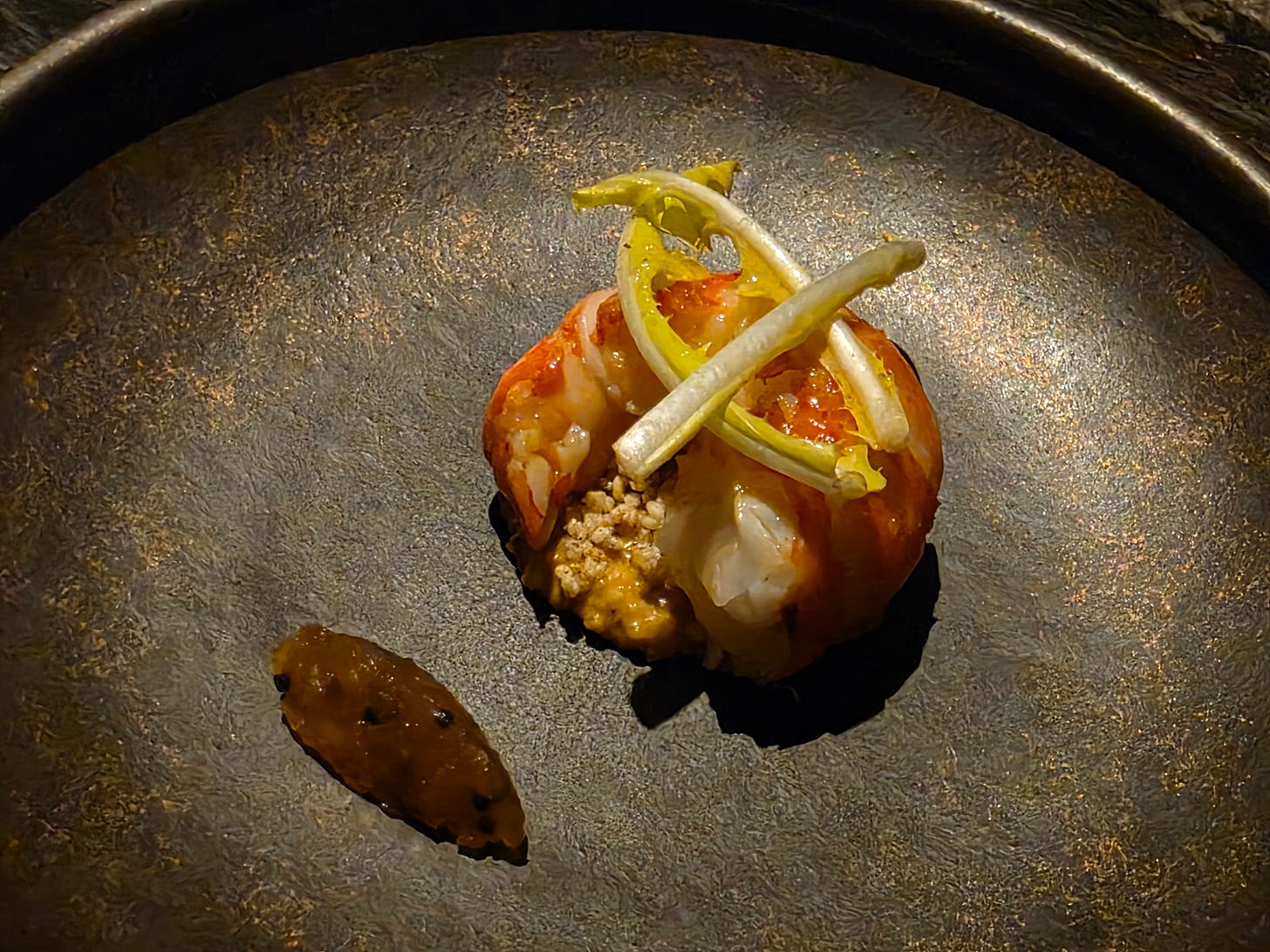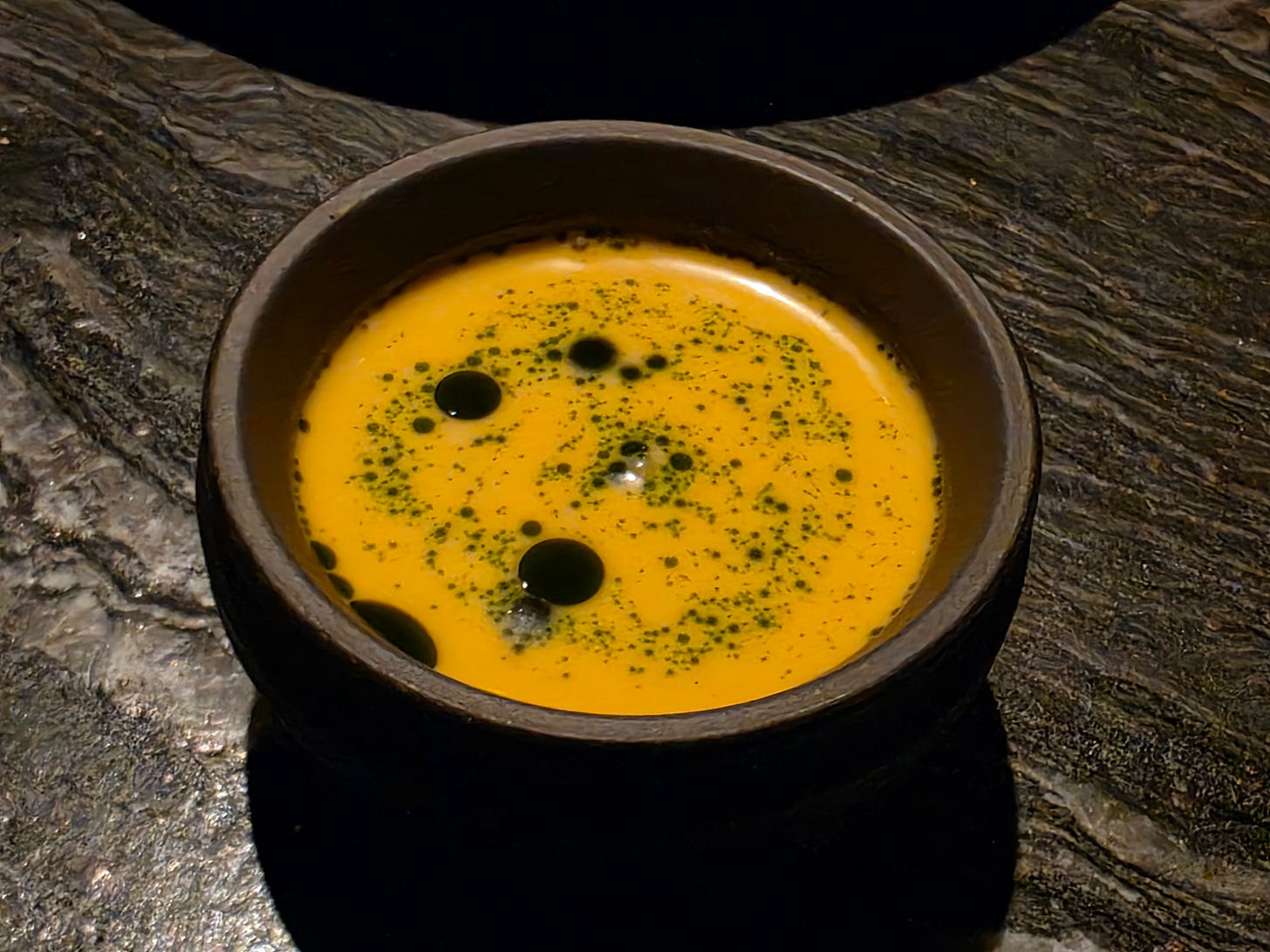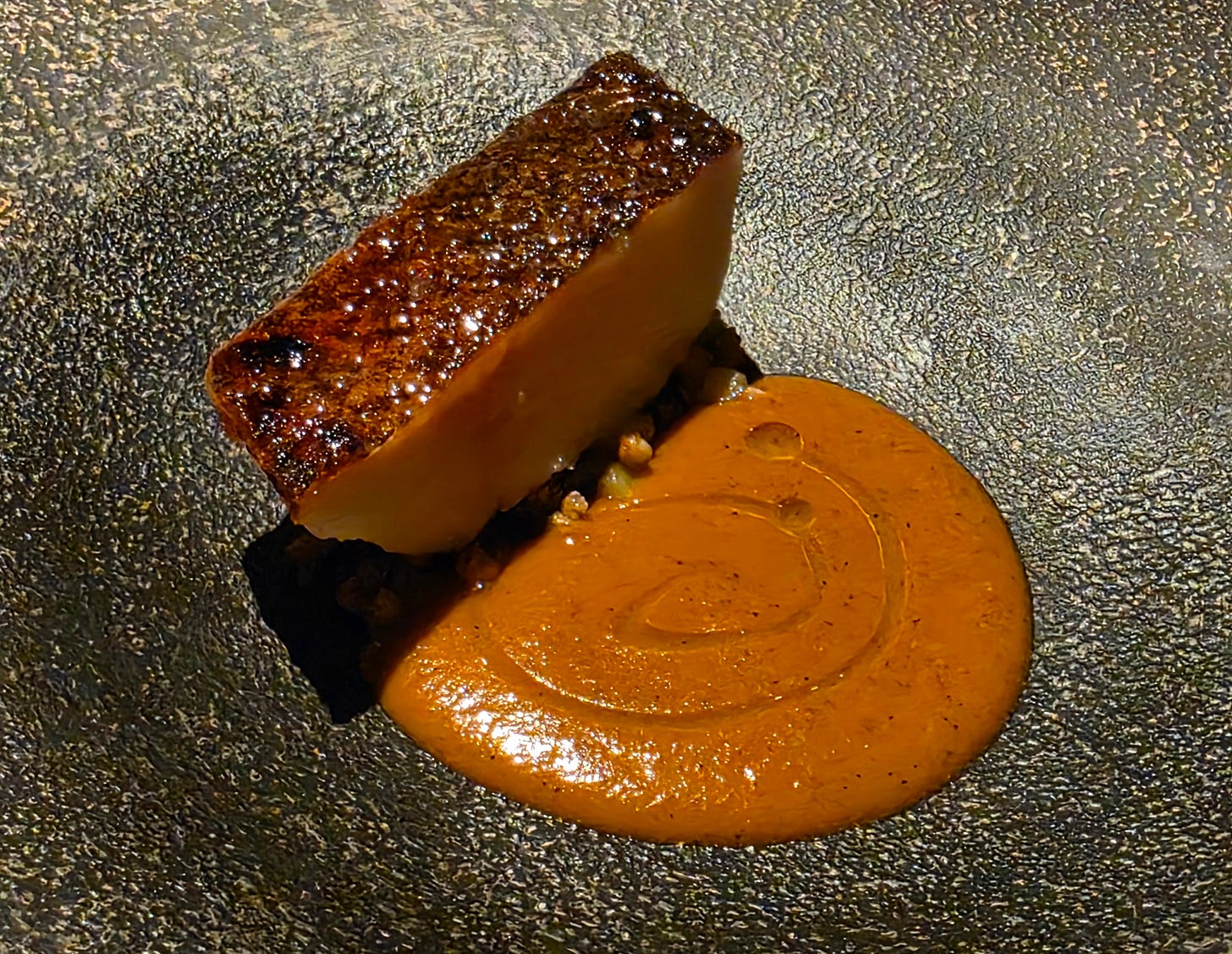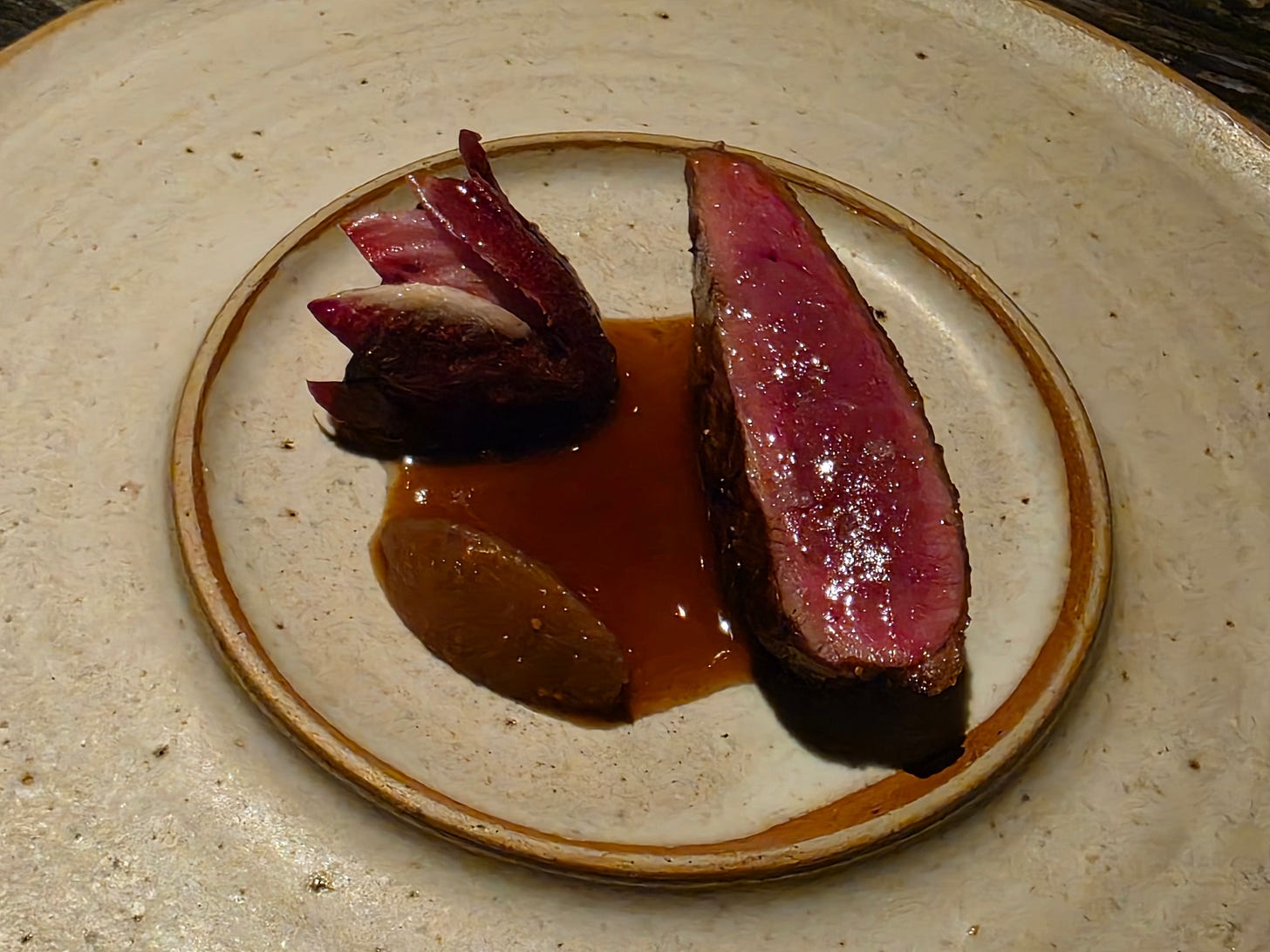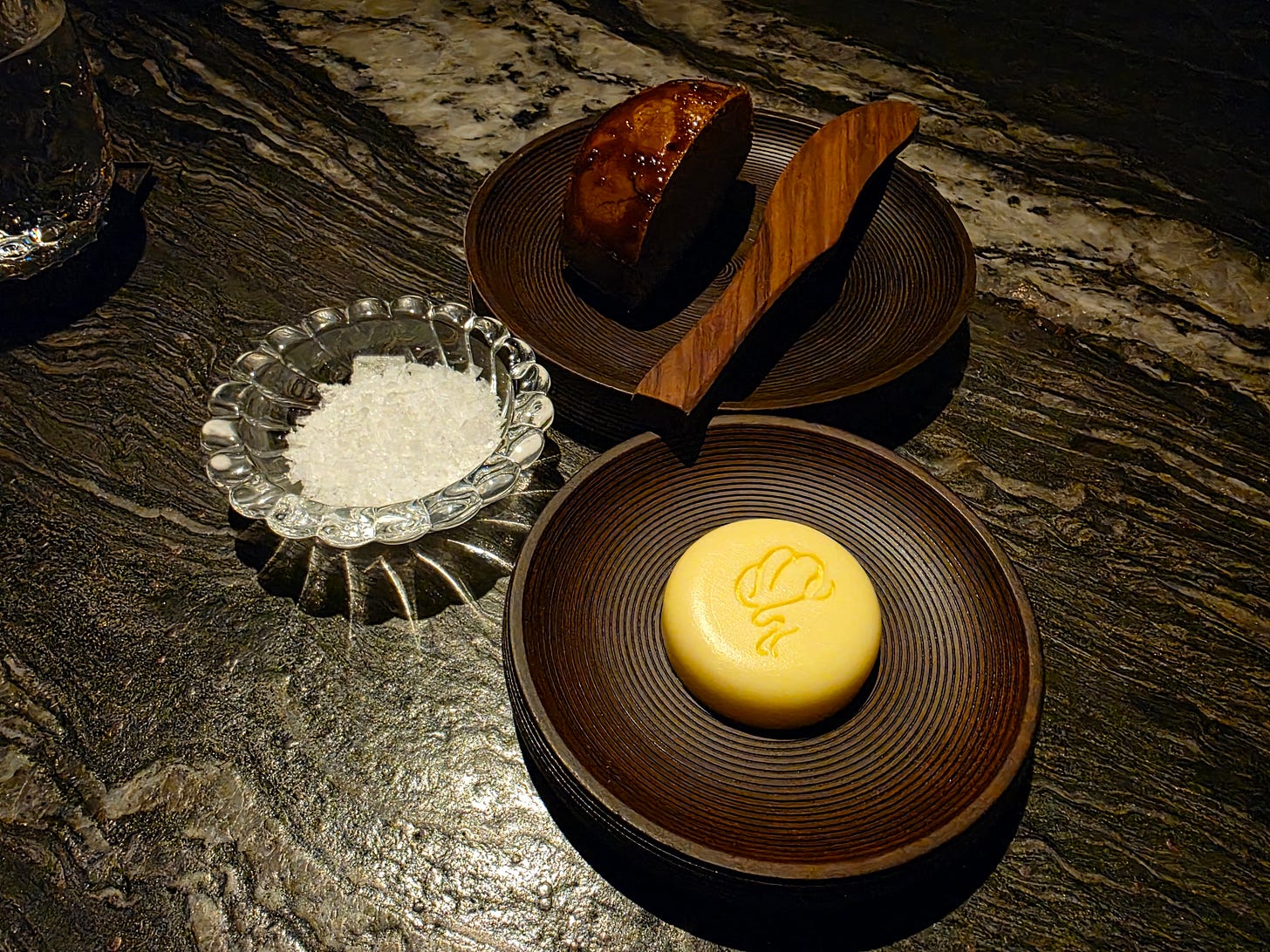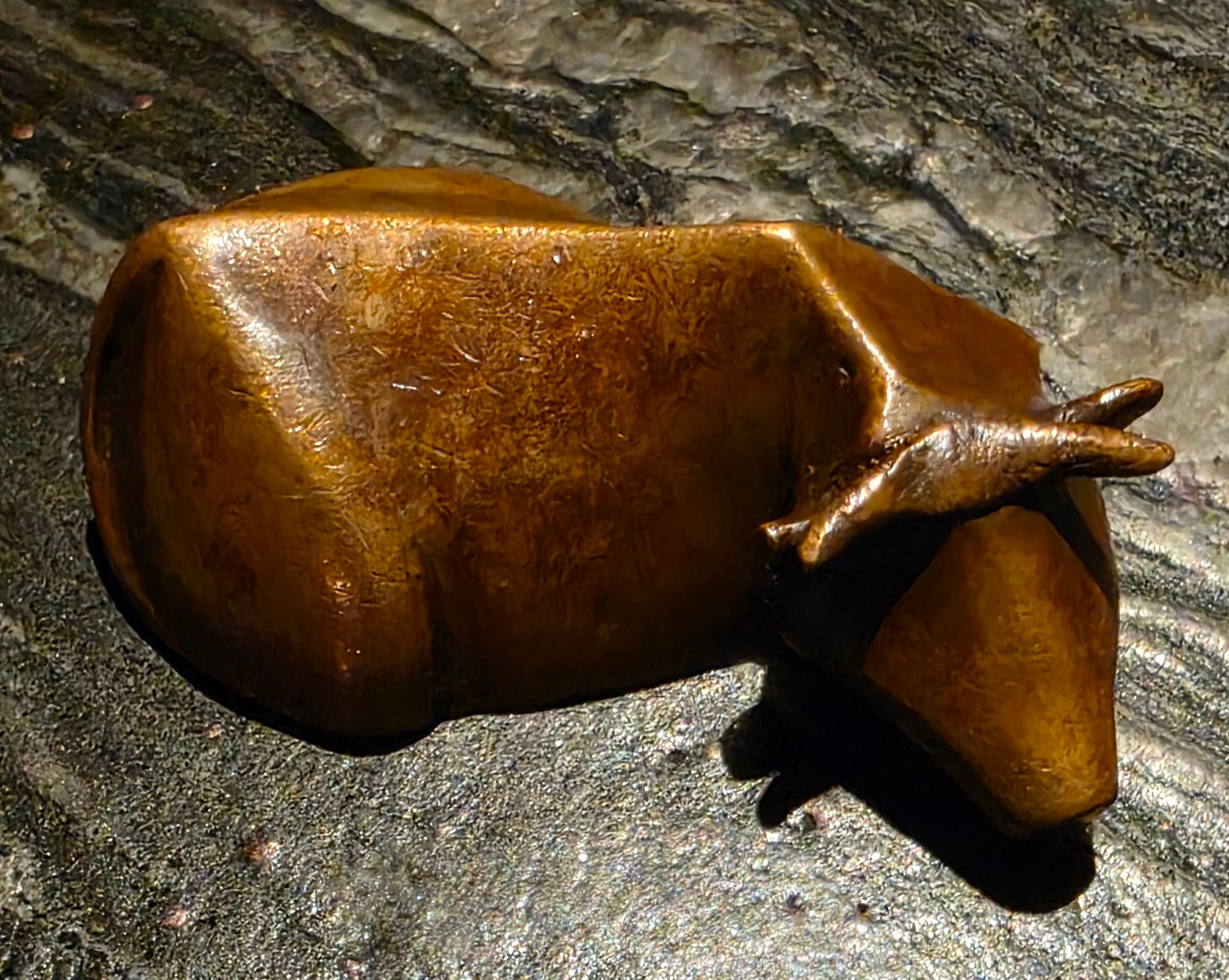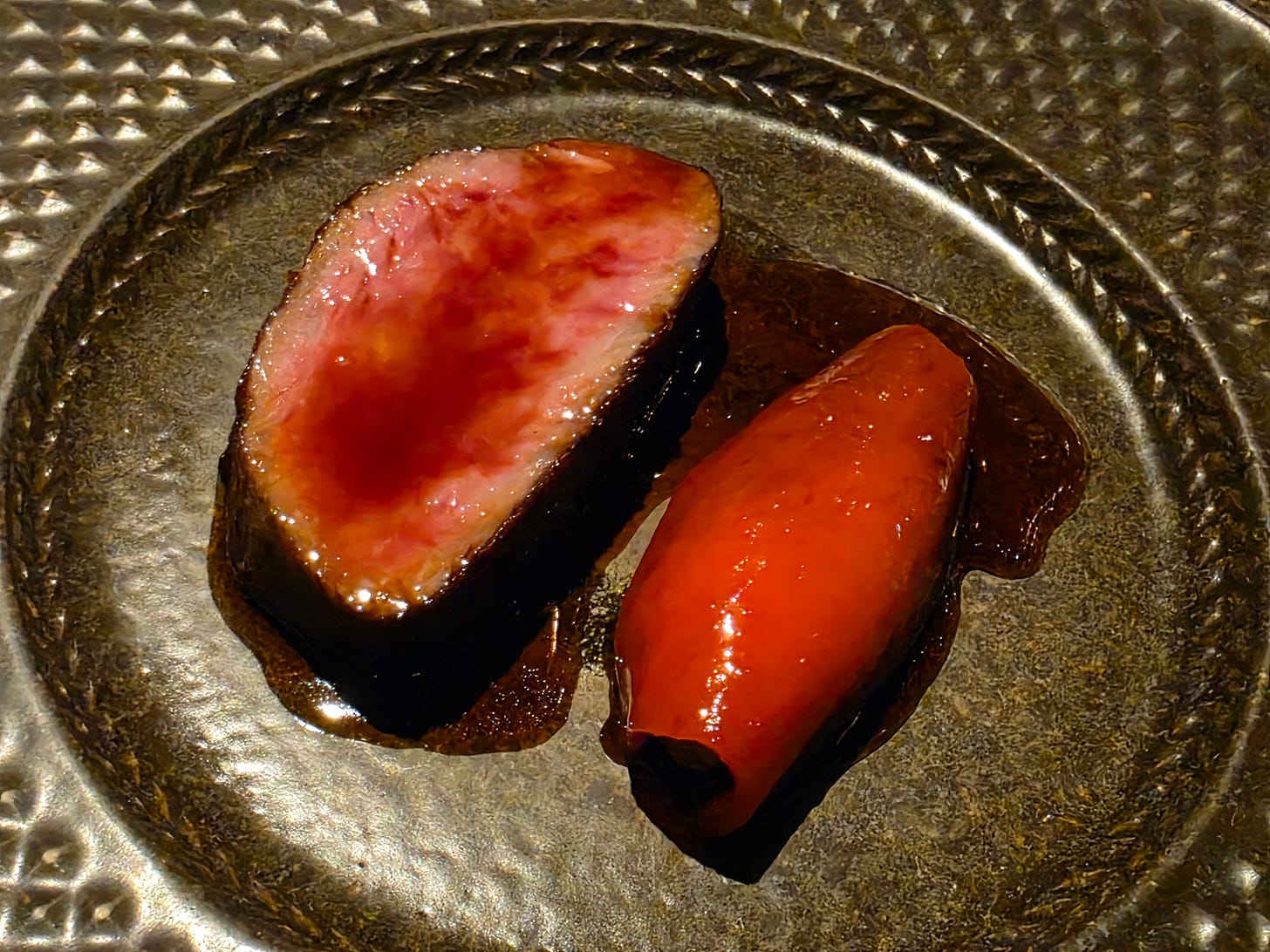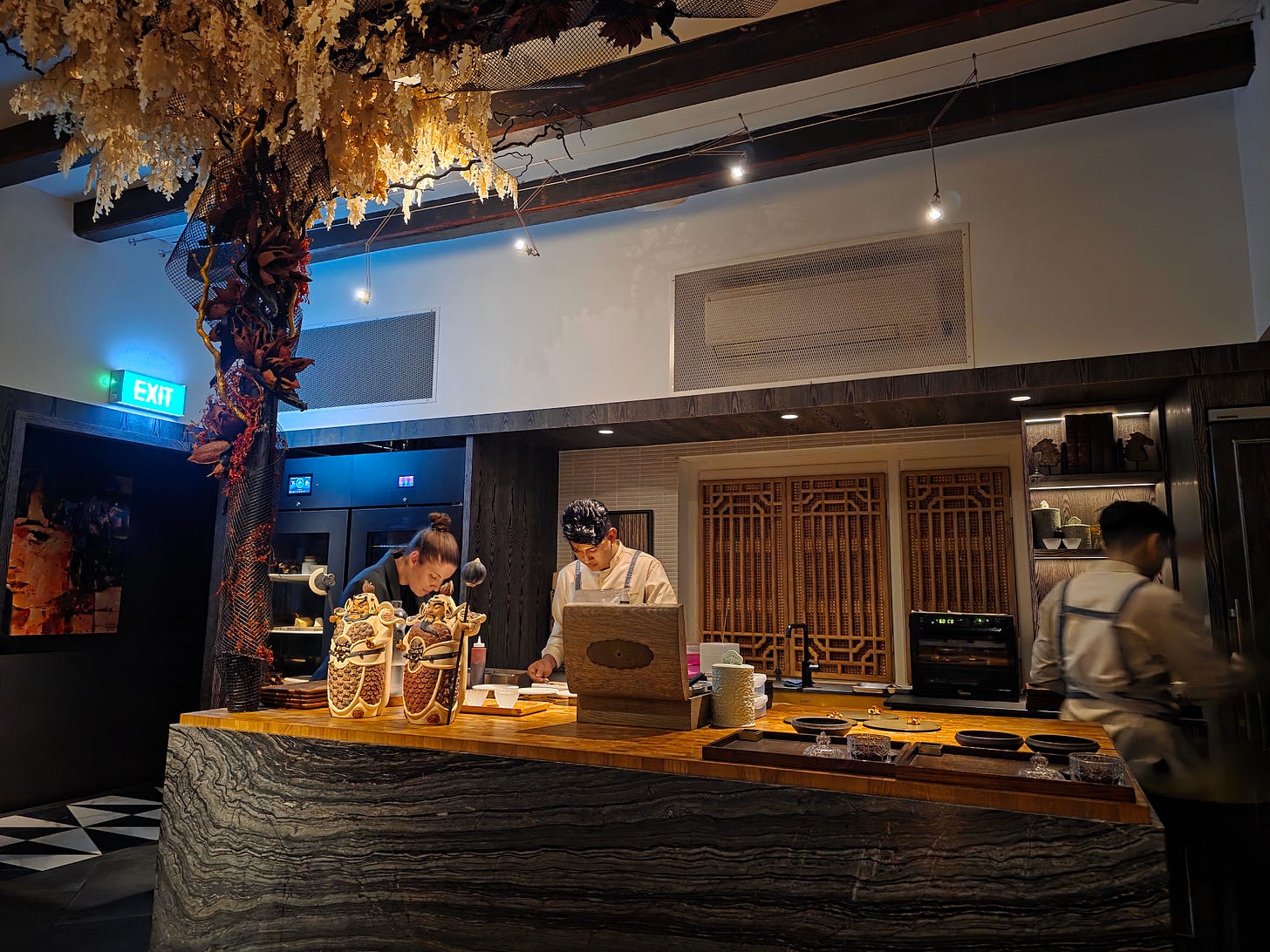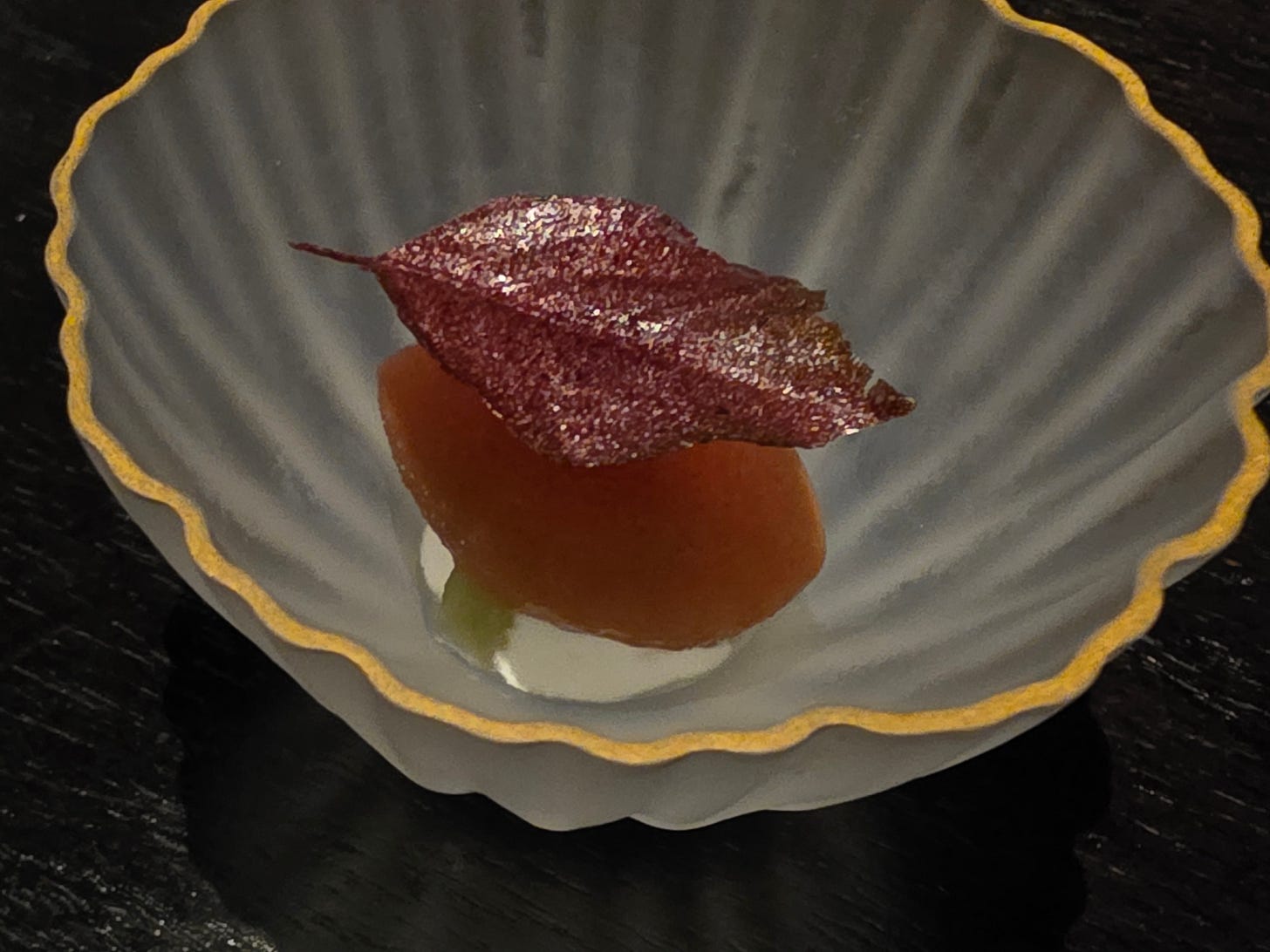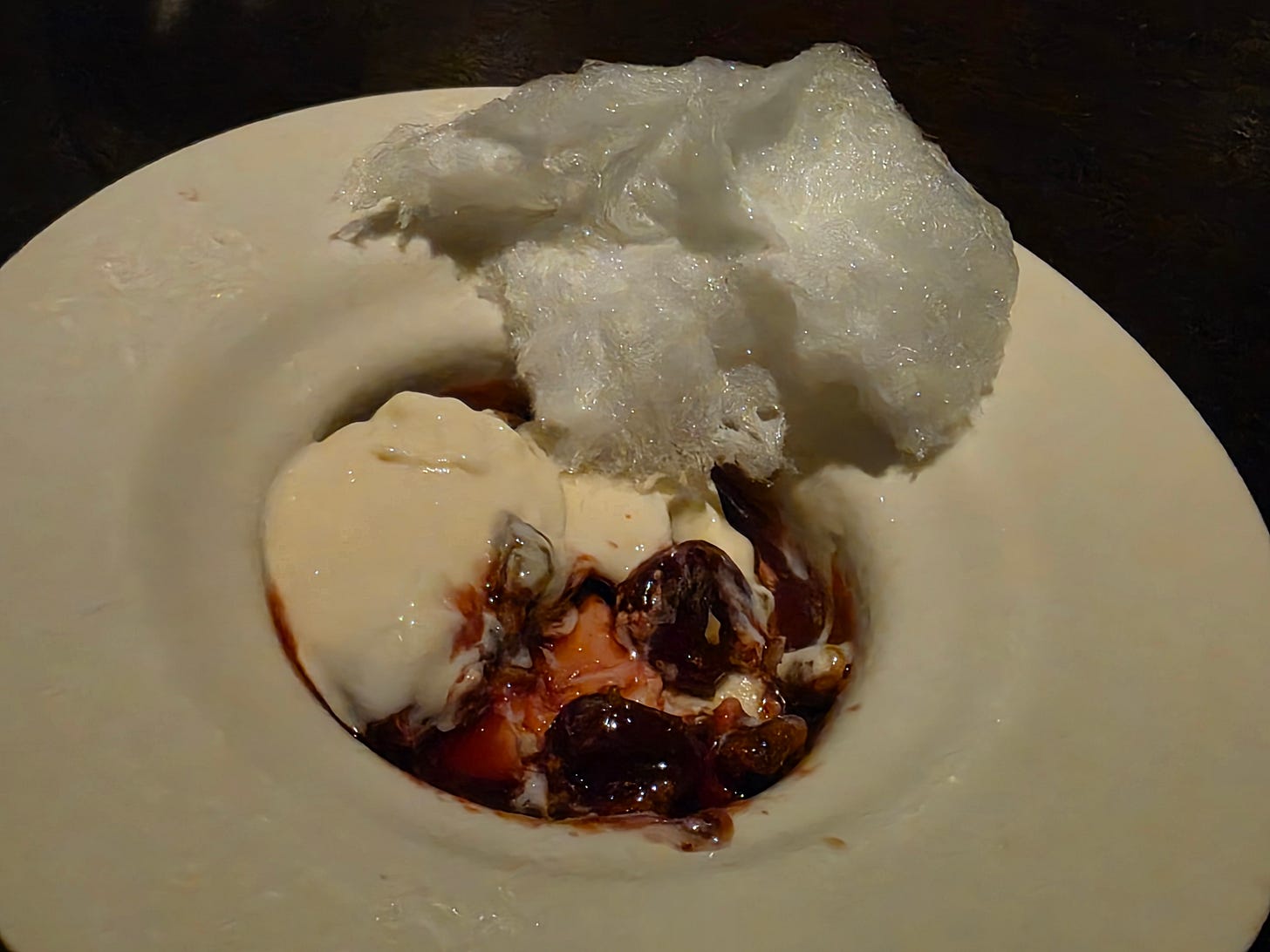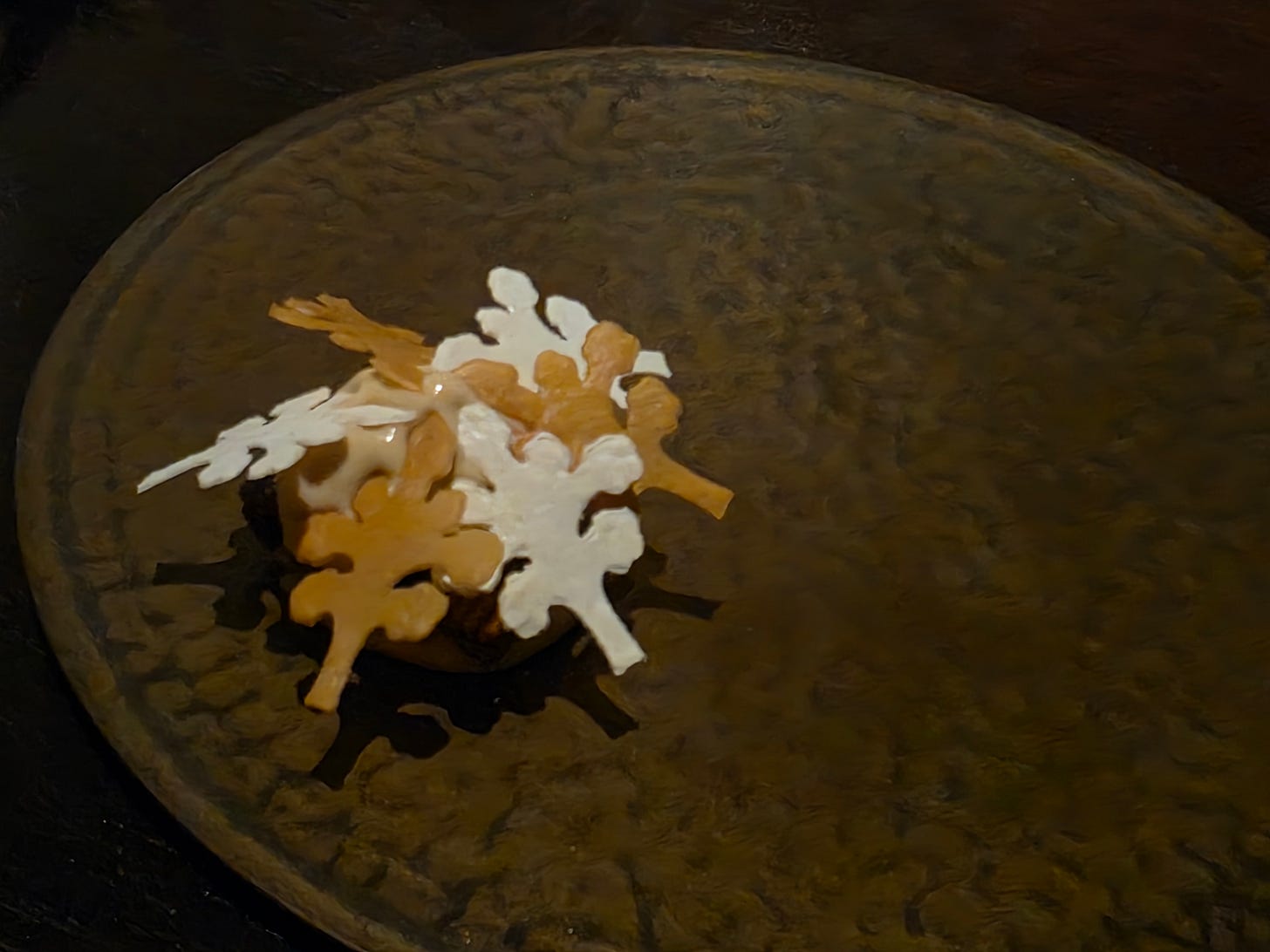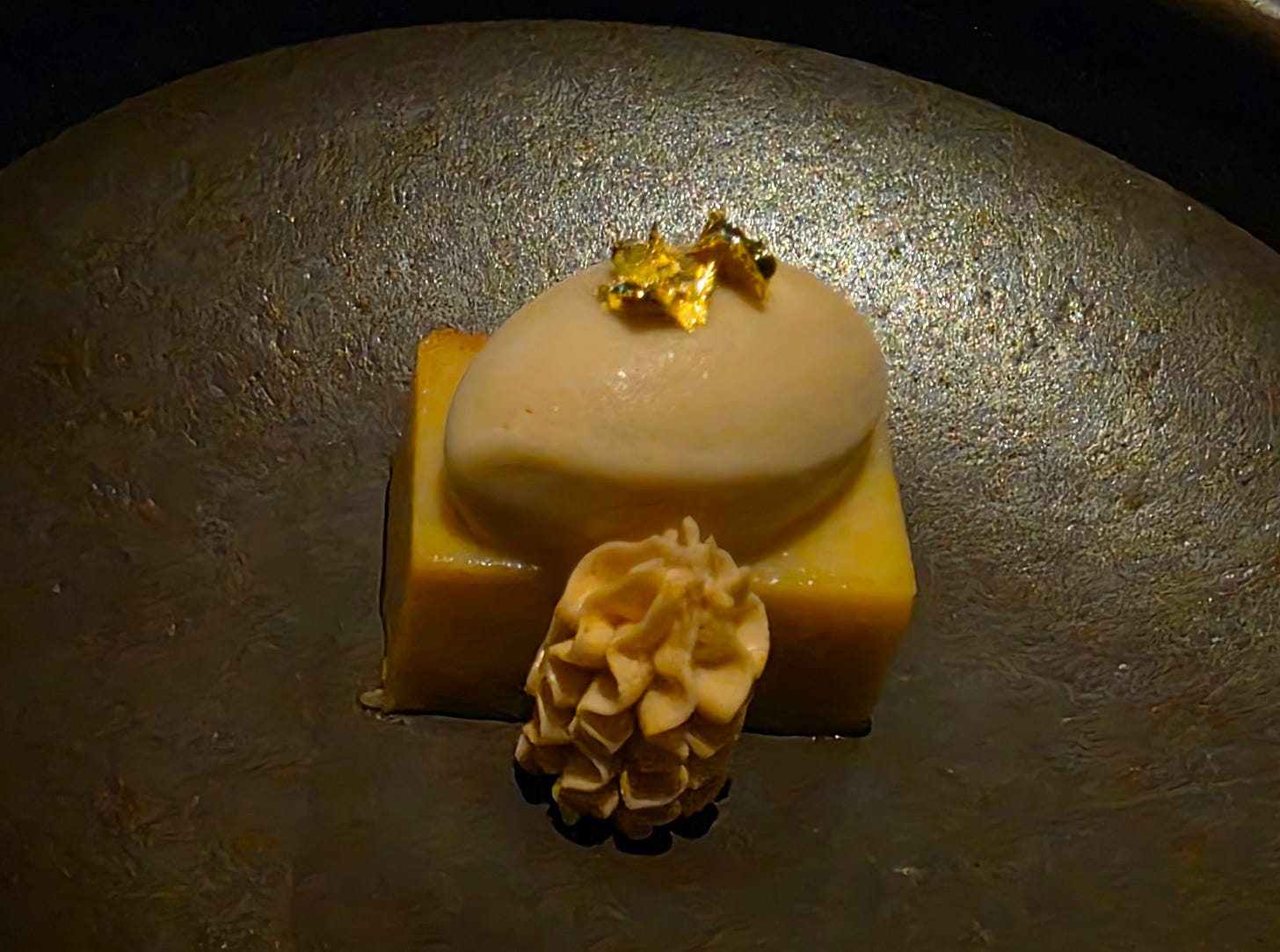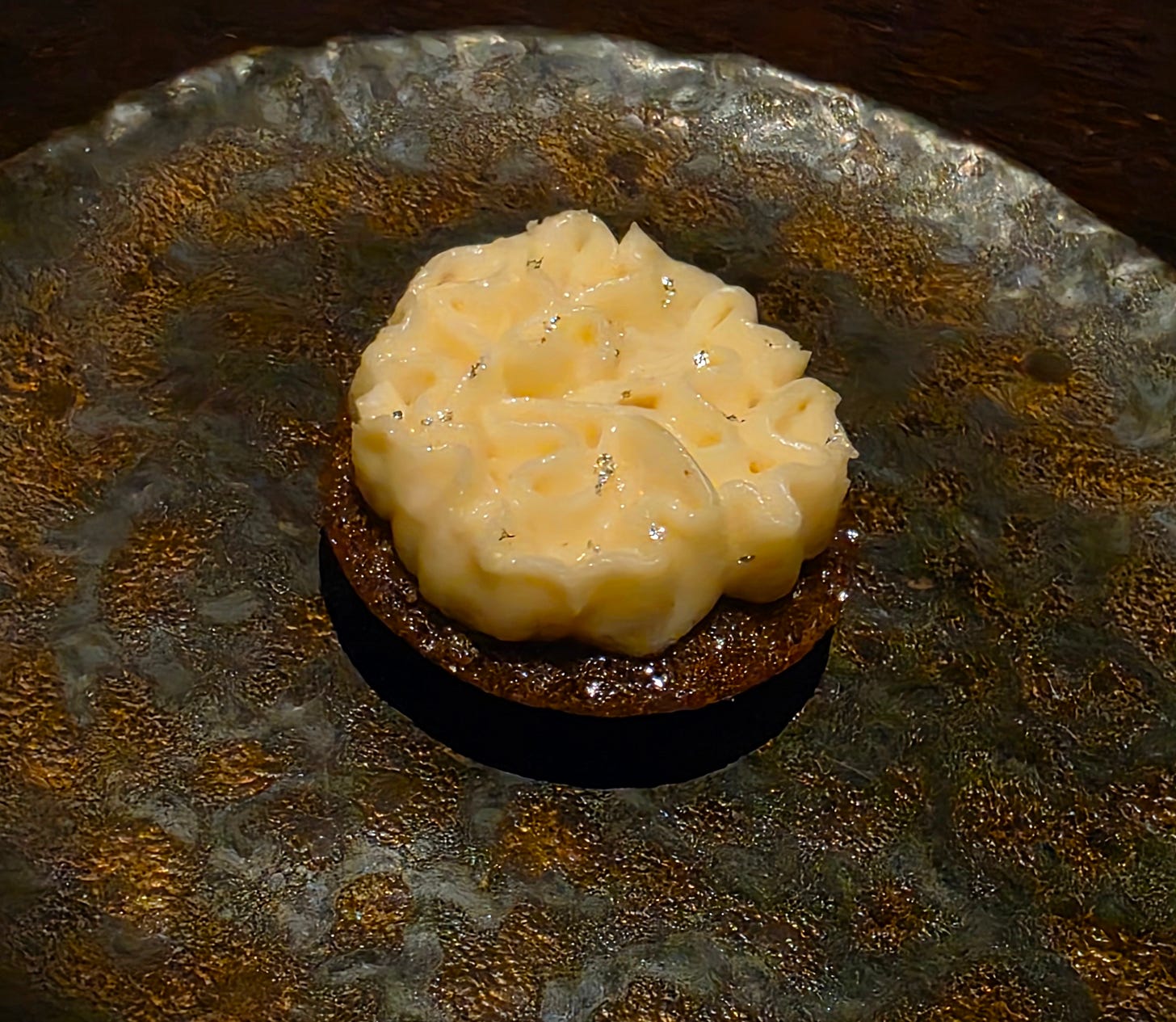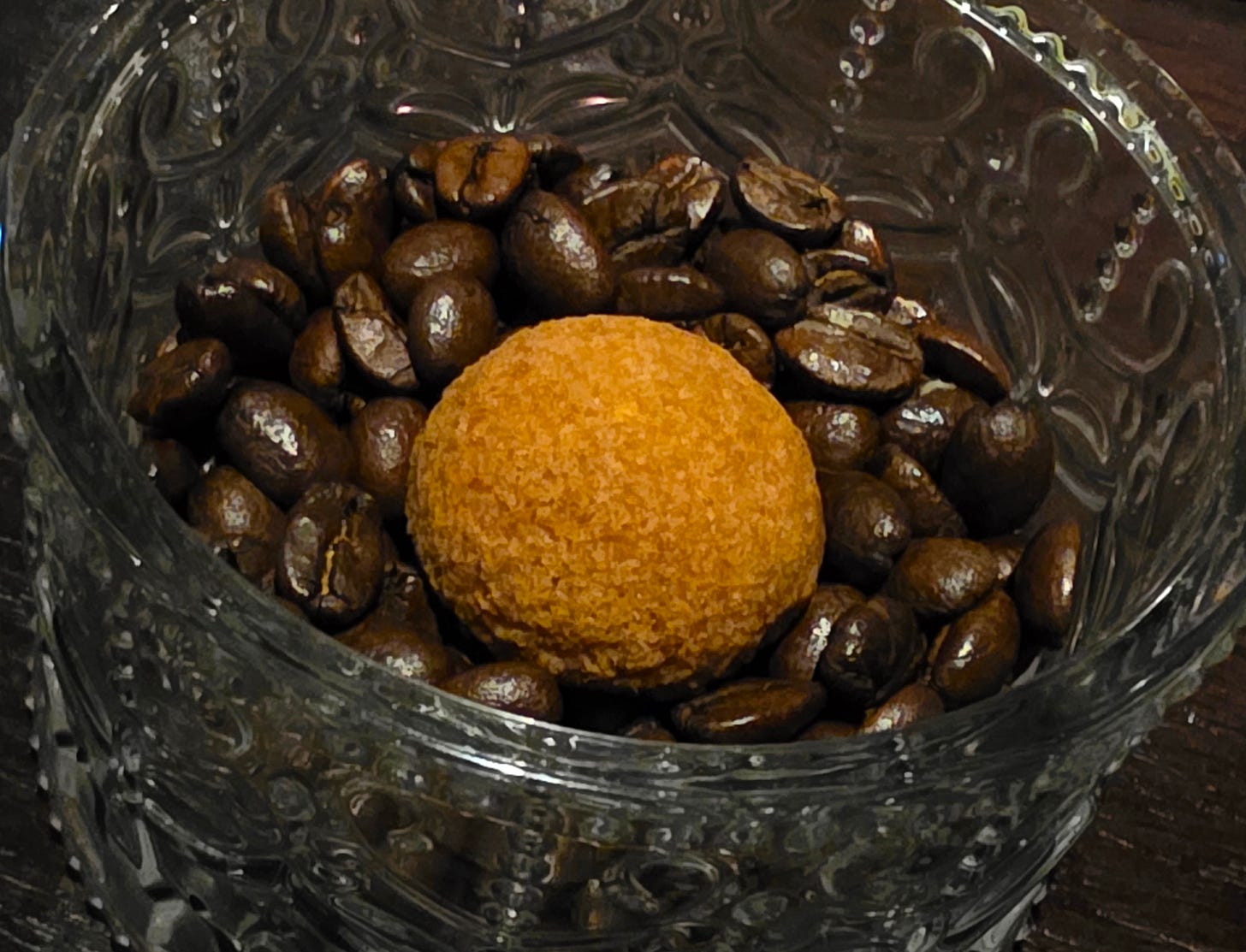Cloudstreet is a unique restaurant in Singapore that I’ve avoided for a very long time. I’ve heard about its reputation for “innovative” cuisine, but anytime I hear fusion, I tend to look for alternatives. Eventually, I decided against my best instincts, and made a reservation to the Singaporean icon.
Cloudstreet blends Sri Lankan, Australian, and European influences. Helmed by Chef-Owner Rishi Naleendra, Cloudstreet offers an intimate, immersive dining experience with a focus on seasonality, sustainability, and innovative experimentation, all served in a warm, sophisticated setting.
Chef Rishi was born in Colombo, Sri Lanka and opened Cloudstreet in July 2019, following the success of his earlier ventures, including the Michelin-starred Cheek by Jowl (later rebranded as Cheek Bistro). After moving to Australia as a teenager, Chef Rishi honed his skills in progressive kitchens like Taxi Dining Room in Melbourne and Tetsuya’s in Sydney, crossing paths with Chef Sun Kim of Meta. He learned to blend European techniques with his Sri Lankan heritage and Australian influences. Naleendra’s wife, Manuela Toniolo, manages the front of house, while he remains the culinary anchor, collaborating closely with his kitchen team to evolve the menu seasonally.
Cloudstreet, named after Tim Winton’s novel—a nod to his time in Australia—embodies his personal journey. The restaurant earned its first Michelin star in 2020, just a year after opening, and a second in 2021, retaining two stars through to present.
Cloudstreet’s legacy lies in Naleendra’s ability to weave his personal narrative into a world-class dining experience, supported by a tight-knit team. It remains a singular expression of his journey from Sri Lanka to Australia to Singapore, earning accolades for its creativity, hospitality, and enduring excellence.
The restaurant is located in a nondescript shophouse in Chinatown. I accidentally walked past it several times before I noticed the subtle signage.
The inside of the restaurant is a dark cavernous space, with dim lighting and a leafy plants hanging from from the ceiling surrounding an open show kitchen as the centerpiece of the space. Most diners were sat around the counter watching the kitchen, although larger groups had private booths that provided a bit more privacy.
Provocative artwork hangs in the hallways, and the waiting room has an interesting set of wooden patterned tiles hanging on the wall.
After taking my seat at the counter, I was offered a glass off a selection of sparkling wines. I chose a Sugrue Blanc de Blanc, which was a bit of an odd British winery just South of London.
During the meal, we weren’t allowed to see the menu and we were told that it would be an eight course seafood-forward menu, but I did not know what each of the individual dishes would be until they were served. We were told to focus on each of the courses, and the menu would be provided at the end of the meal. The staff take great efforts to personalize the meal for each visit and they record exactly what dishes you had at your meal, so returning guests can get a completely different menu, or repeat some of their favourite courses.
Similar to Zen, the experience would involve a bit of movement within the restaurant. As it turns out, Zen, Frantzen and Cloudstreet all share the same parent restaurant group. The savory courses would be served in the main dining room and I would be later invited to the lounge upstairs for dessert.
Another interesting detail was the selection of cutlery stands that changed between each course and point to an ingredient in the next dish. The first stand was a lacquered oyster shell, which pointed to the first dish incorporating an oyster.
The first amuse bouche was a tiny grilled oyster, wrapped in betel leaf with a bit of acidity from some pickled shallots. All of this was topped with a coconut milk foam and some finger lime juice.
The next amuse bouche was a bergamot meringue, with a disc of yellow beetroot jelly, a Japanese mandarin kosho paste and topped with “Tradition Caviar”. An interesting combination of dry and crisp with popping citrus, salty caviar and a tang from the kosho.
Next came a butternut squash sorbet studded with puffed Vietnamese com rice, topped with slices of Japanese squid, and fermented chili powder. Unique combination of textures, temperatures and flavours.
The first dish that wasn’t a hit, a piece of Jeju abalone, with basil and edamame hidden underneath a creamy zucchini foam, pepper leaf, and a abalone liver sauce.
The final amuse bouche was a celeriac egg custard chawanmushi, topped with a chilled gelatinized crab consommé, with thin silky strands of crab meat with drops of chili oil adding a bit of a kick.
The first course featured Spanish Carabinero prawns. They’re known for their large size, and a natural deep red colour. Slices of prawn were placed on top of Chitose cherry tomatoes. Topped with a hay made from dried leeks and a scoop of Kaluga Queen caviar, from the largest producer of farmed caviar from China. The sauce was inspired from Sri Lankan cuisine and used fermented mangoes and dill oil to add a bit of tart, funkiness and pungency to the dish.
The next dish was an Australian marron, a large freshwater crayfish, on a bed of millet porridge with Indian and Sri Lankan spices, pickled sea coconut chutney. Just lightly poached and perfectly tender with a bit of spice and sweetness from the porridge and chutney.
The marron was served with a very traditional Thai Tom Yum broth with coconut milk, lemon grass, Thai basil, in a rich and flavourful fish stock.
The very seafood forward menu continued with a slice of Murray cod, dry-aged in-house for seven days, served on a bed of puffed buckwheat, charred Asian greens, and a sauce made from fermented bell pepper and almonds with Sri Lankan spices. The fish was quite unique, with a thick, crisp skin that was almost tough, and a dense, compressed flesh, without any of the flakiness characteristic of most fish.
A perfectly cooked pigeon breast from the Loire Valley, with a fig and pigeon sausage delicately wrapped in endive leaves, a fig chutney and madeira jus. Really well executed, classic pairing, and absolutely delicious.
Right before the main course, I was given a slice of Sri Lankan Stout and liquorice bread brushed with a generous amount of molasses. I was encouraged to spread the butter and only add some salt if the sweetness from the molasses was too intense. One of the difficult things about eating the bread was that the molasses was incredibly sticky, and I inadvertently covered the rest of the slice with butter, making it incredibly difficult to hold without getting molasses or butter on my hand. Fortunately, I was presented with a cotton towel to wipe down my hands and remove the molasses residue.
The main was a slice of Tochigi A4 Wagyu, with a piece of compressed baby gem lettuce, shizo and wasabi cream, wrapped in a bell pepper. This dish was topped with an soy sauce that was fermented in house for 18 months. Just pure intense fattiness coating the mouth and a rich, delicious mouthfeel.
After the main, I was invited upstairs to the lounge for dessert.
One of the chefs starting speaking to me, and we were talking about various cuisines and where to eat. After 20 minutes, I was left wondering, “don’t you have work to do”. After another 20 minutes of conversation, I realized I was actually speaking to Chef Rishi, who was so passionate about good dining, that we were comparing notes about some of the best restaurants in Singapore and Bangkok, discussing the evolution of the F&B industry in Asia. He promised to give me his list of recommendations on best food in Bangkok and Singapore, and I have added many of the destinations to my list.
The first dessert was a pink guava sorbet, on top of diced rose apple, a tangy yoghurt marshmallow, topped a crystallized sugar rosella leaf. This was probably the only “normal” dessert of the bunch, and a great palate cleanser before the more unique desserts.
The main dessert was a white pepper ice cream with a cheery compote with crushed pecans for texture all hidden away under a cloud of candy floss with an ornamental potato paper airplane on top. The white pepper ice cream reminded me a bit of a classic peppery Singaporean pork rib soup (bak kut teh), and paired well with the sour cherry and crispy pecans.
Another experimental dessert was a cauliflower ice cream, with toffee cream cheese, date jam, walnuts, diced pickled apples, Singaporean kuih lapis and dehydrated cauliflower chips. Unique, earthy, nutty, and not really my cup of tea.
The final dessert was a bread and butter putting topped with vegemite ice cream. Unique, but again, I wasn’t a huge fan.
Moving to the petit four, a ragi millet financier topped with a hazelnut Chantilly cream.
Finally a coffee choux pastry, sweetened with traditional Kithul palm syrup.
Overall, a really unique meal. Lots of interesting plays on textures and flavours. The seafood was very well executed, and I now understand why every description of Cloudstreet I’ve been able to find have described it as “innovative”. The thing that made Cloudstreet memorable was an enthusiastic and experimental chef who obviously loved what he was doing and sharing his experiences.
That said, many dishes that were more experimental than delicious, or simply not my cup of tea. Unfortunately, Cloudstreet hasn’t really changed my opinion on “fusion” cuisine, and while a memorable experience, I preferred the more traditional experiences of somewhere like JAAN or Saint Pierre at a similar price point.
Total Damage: 550 SGD/1 person.

